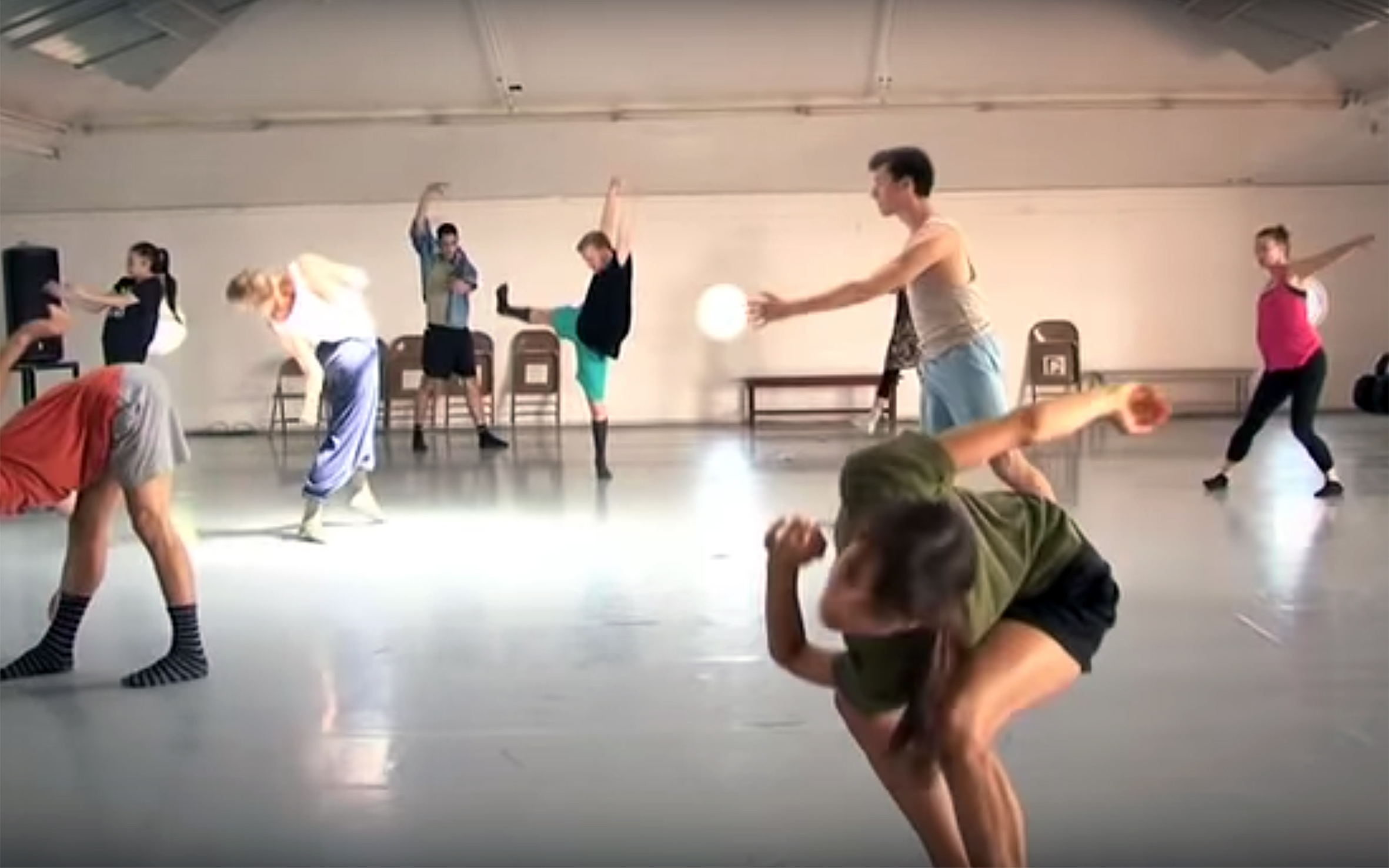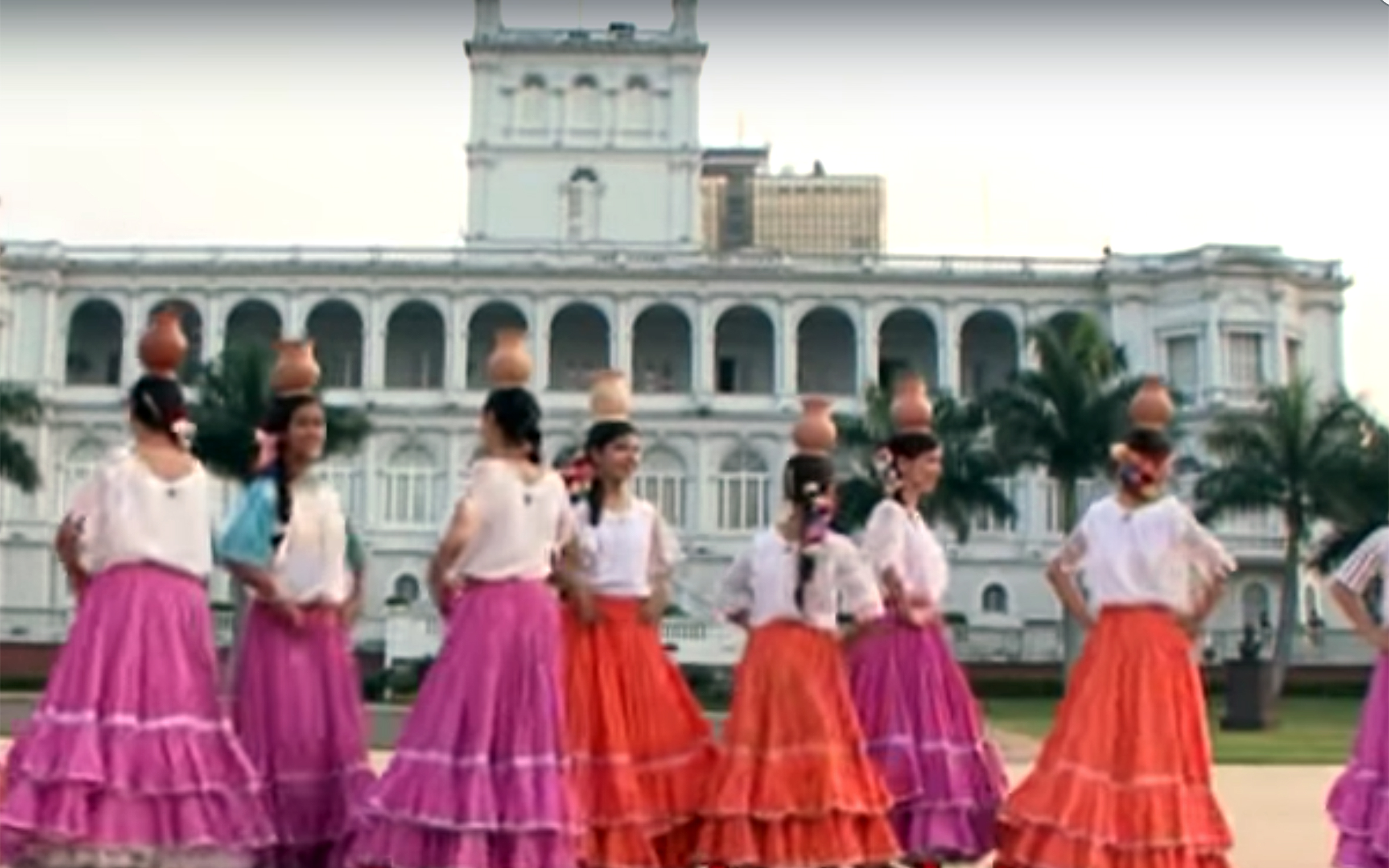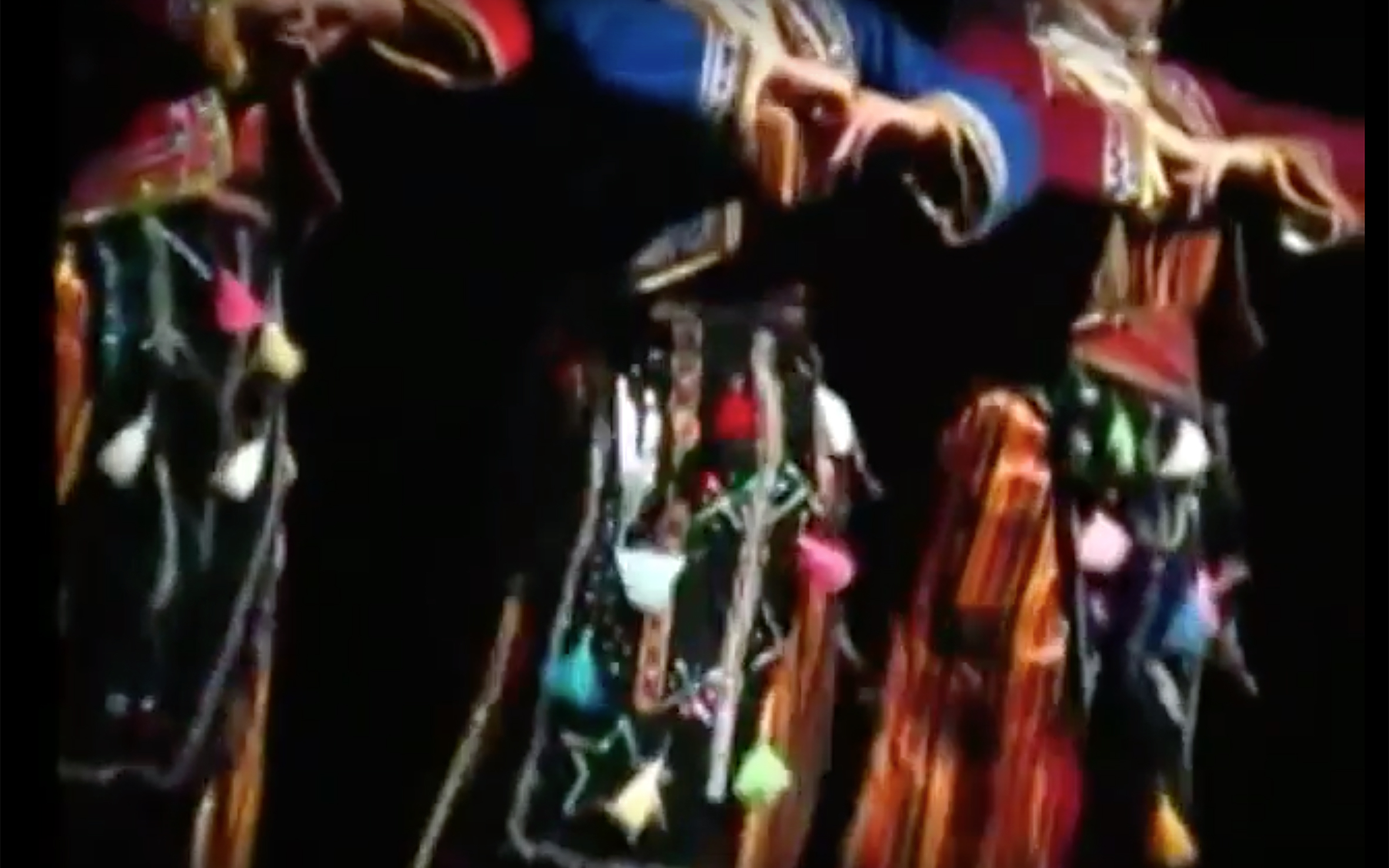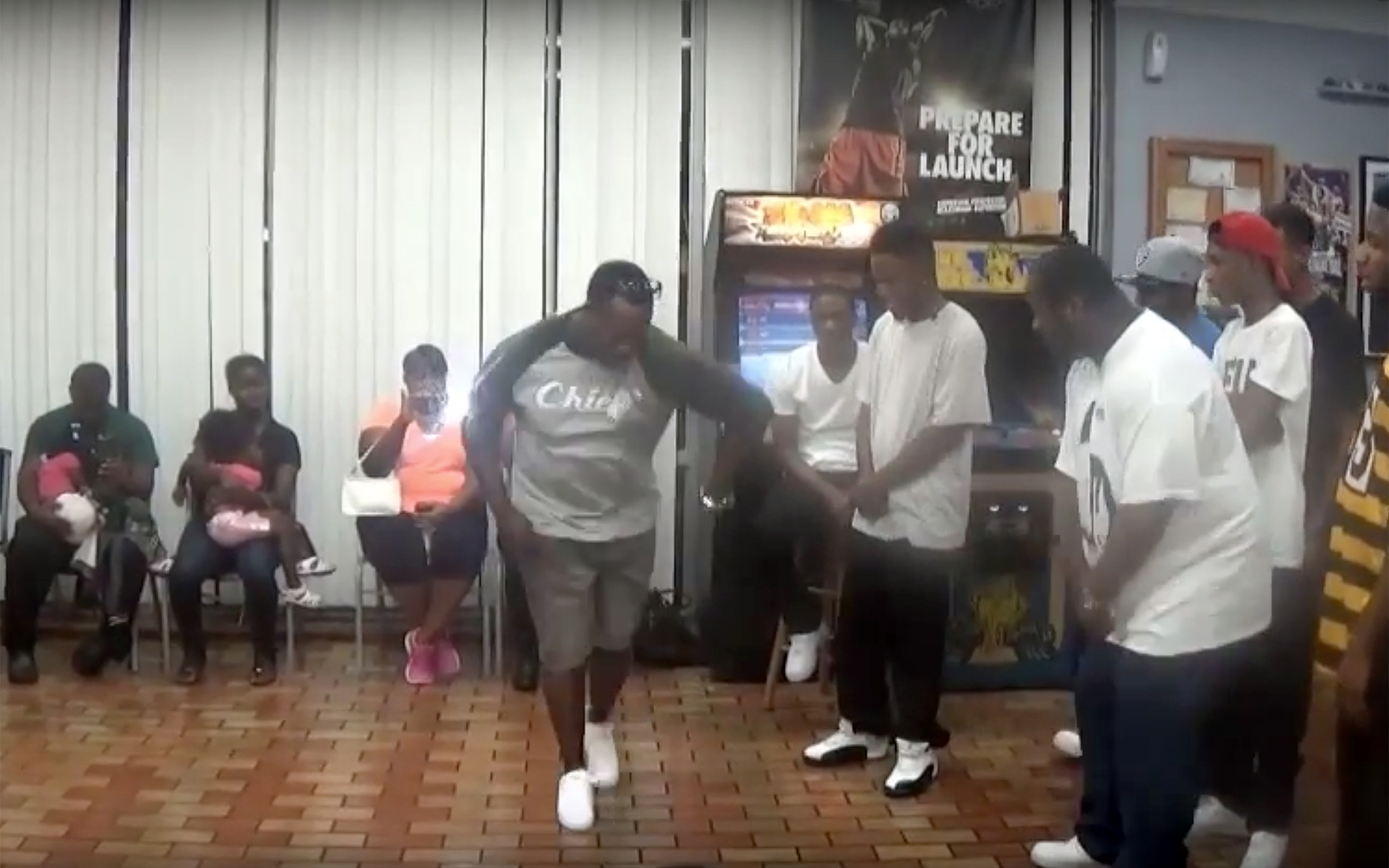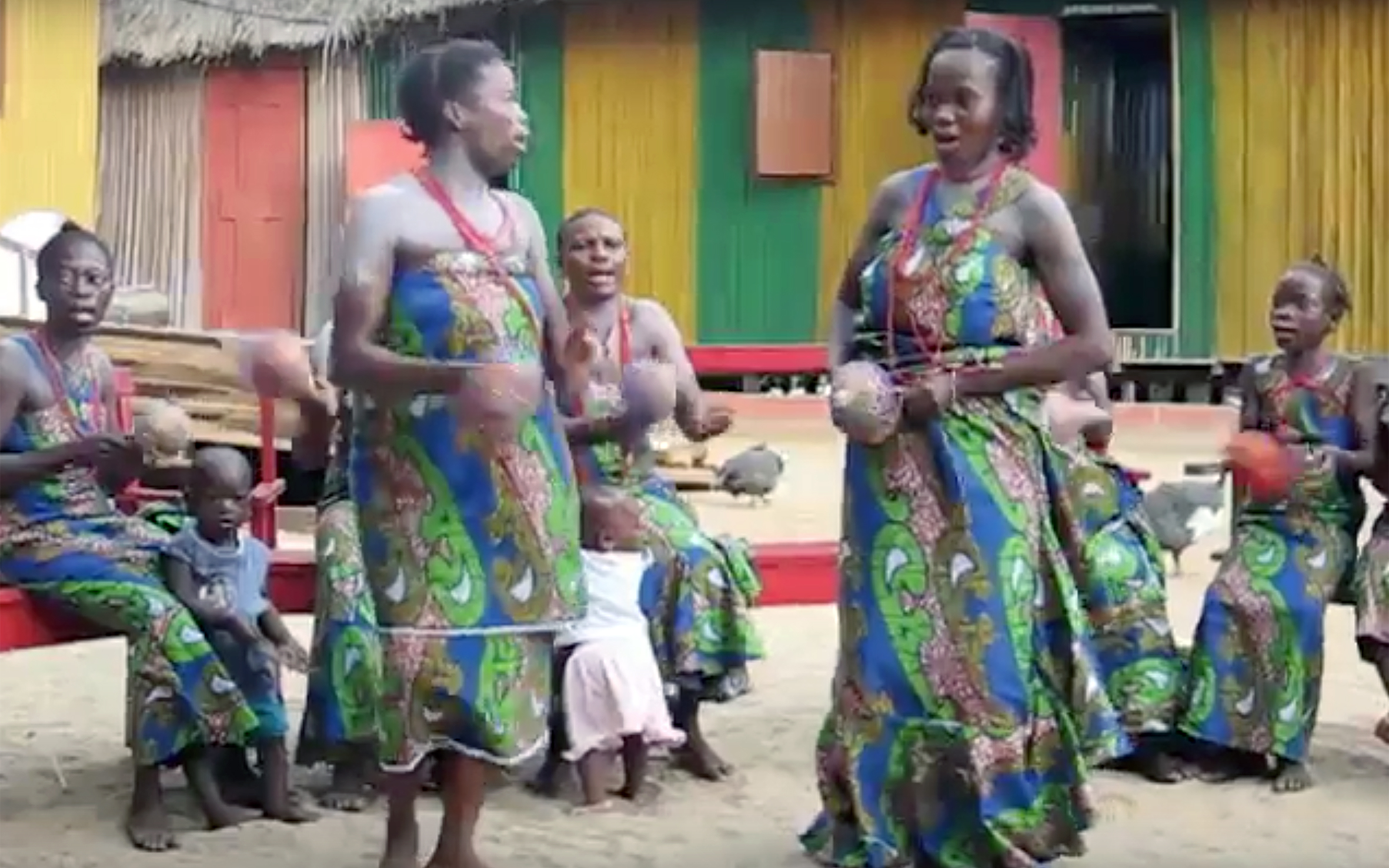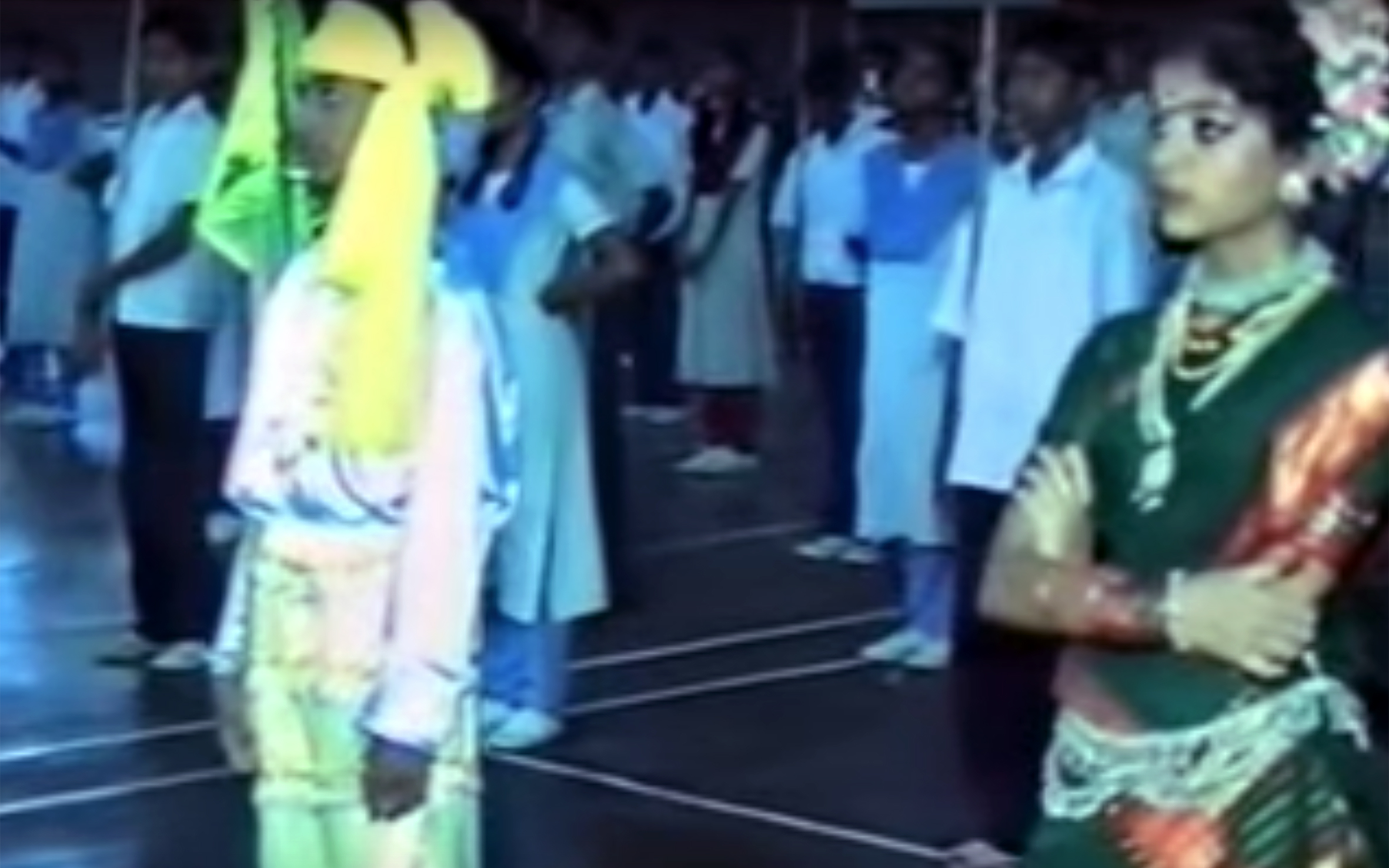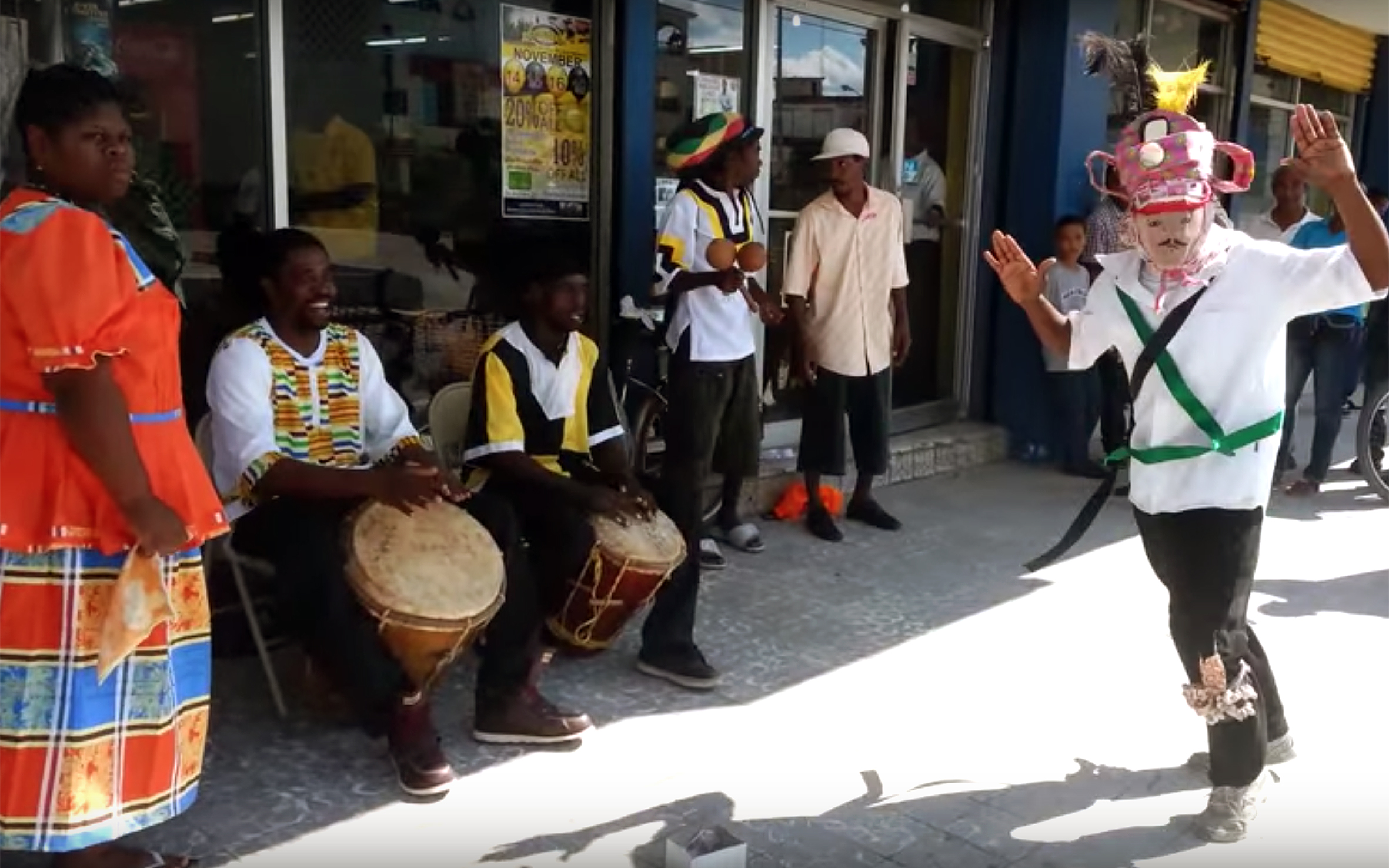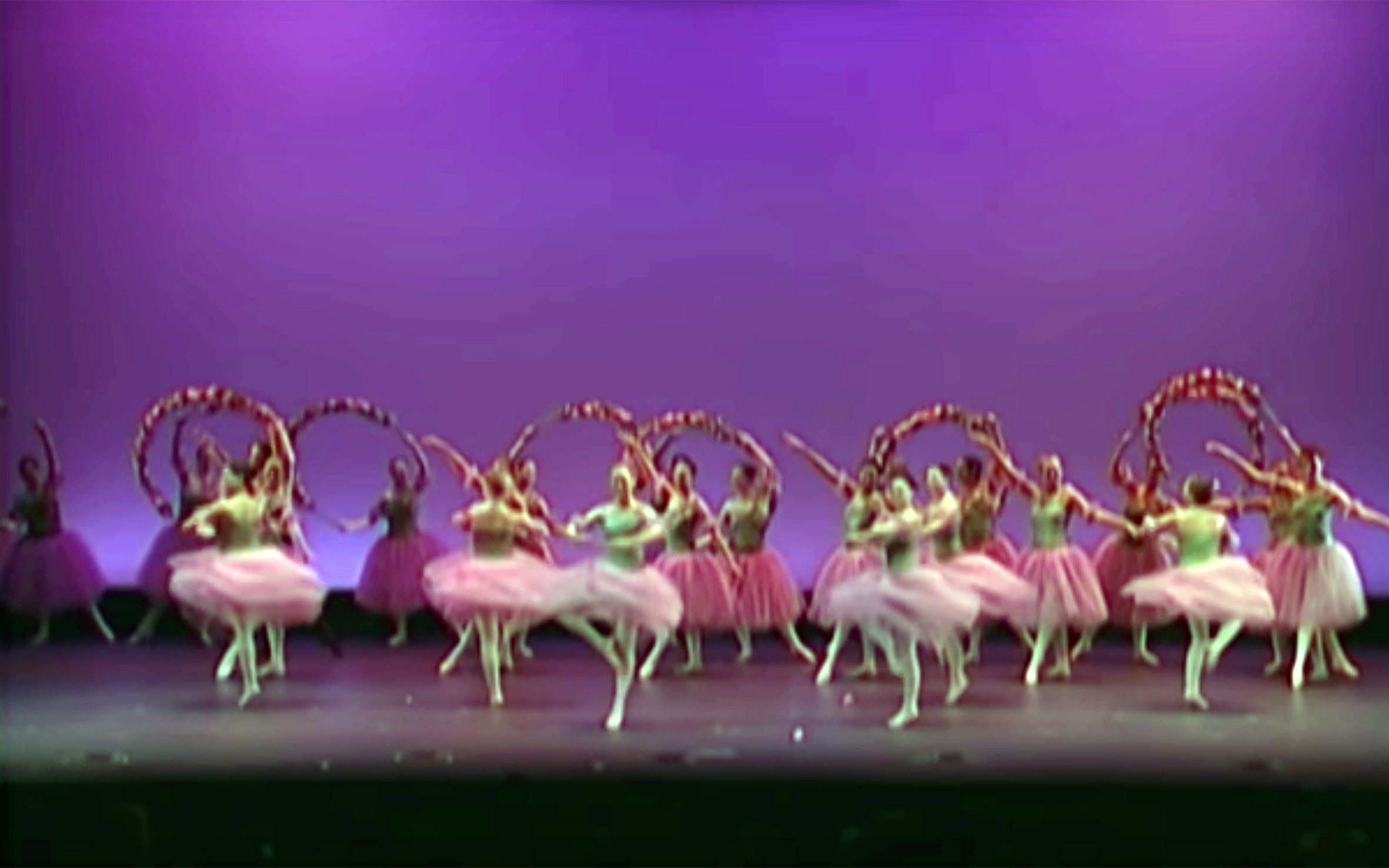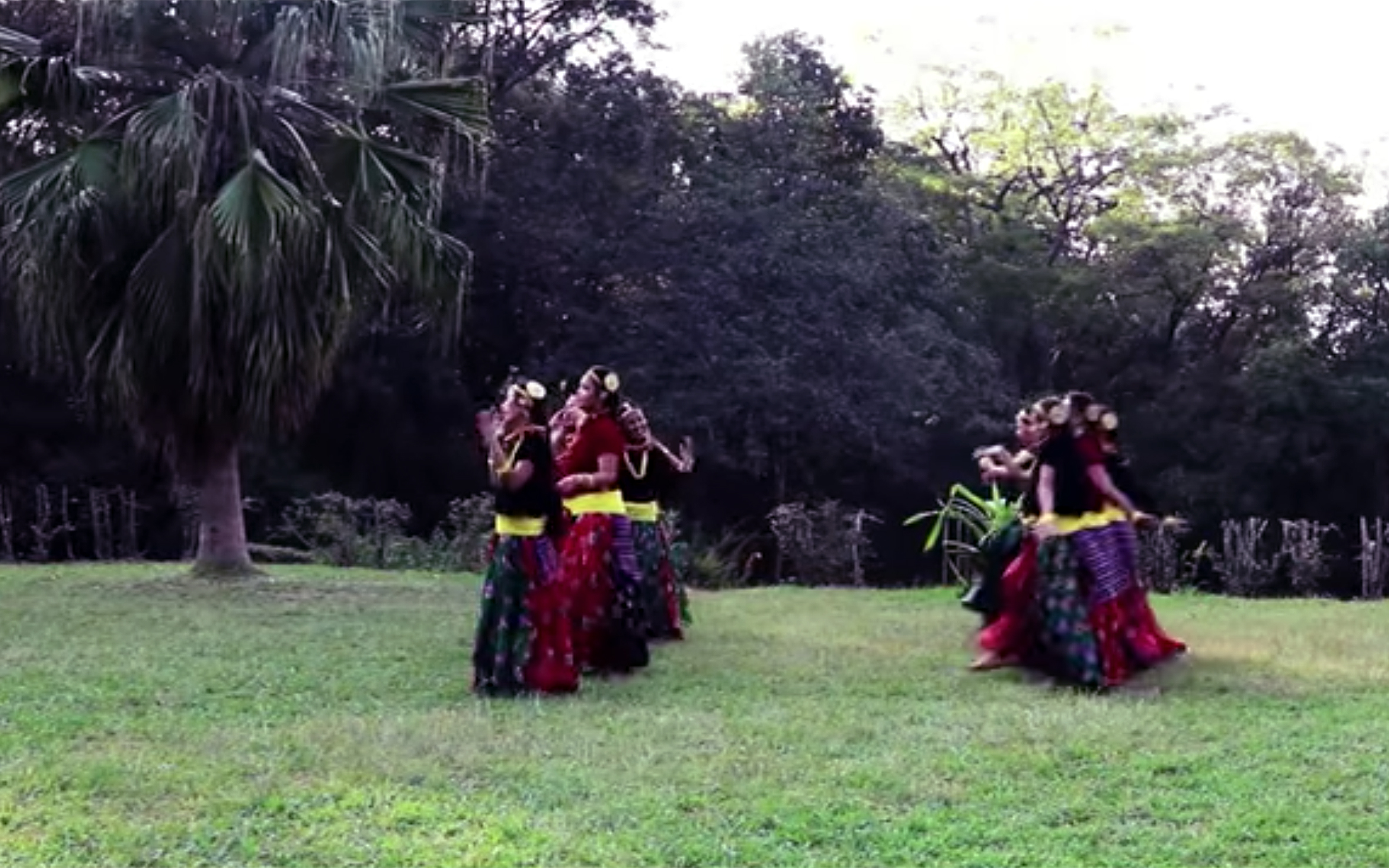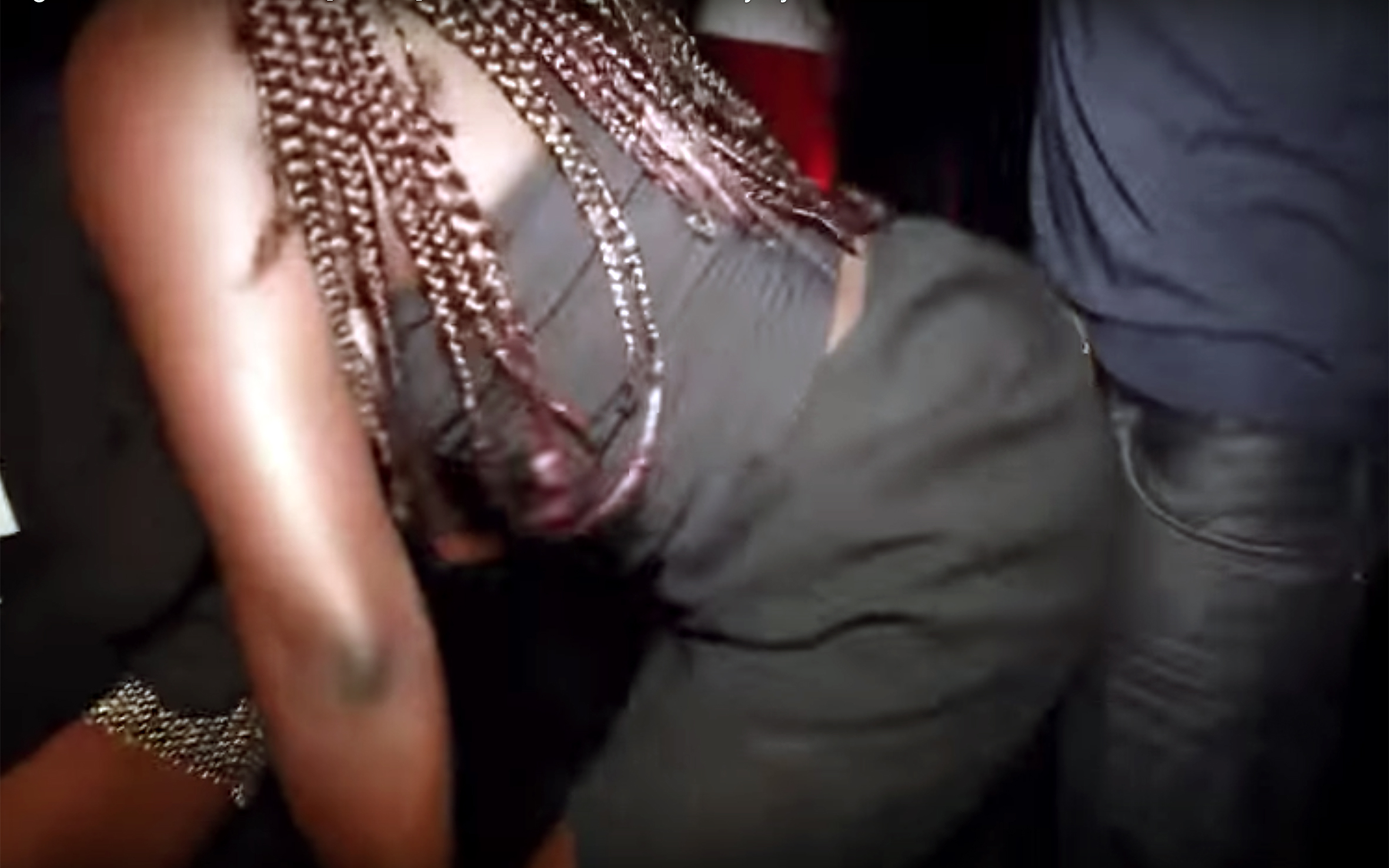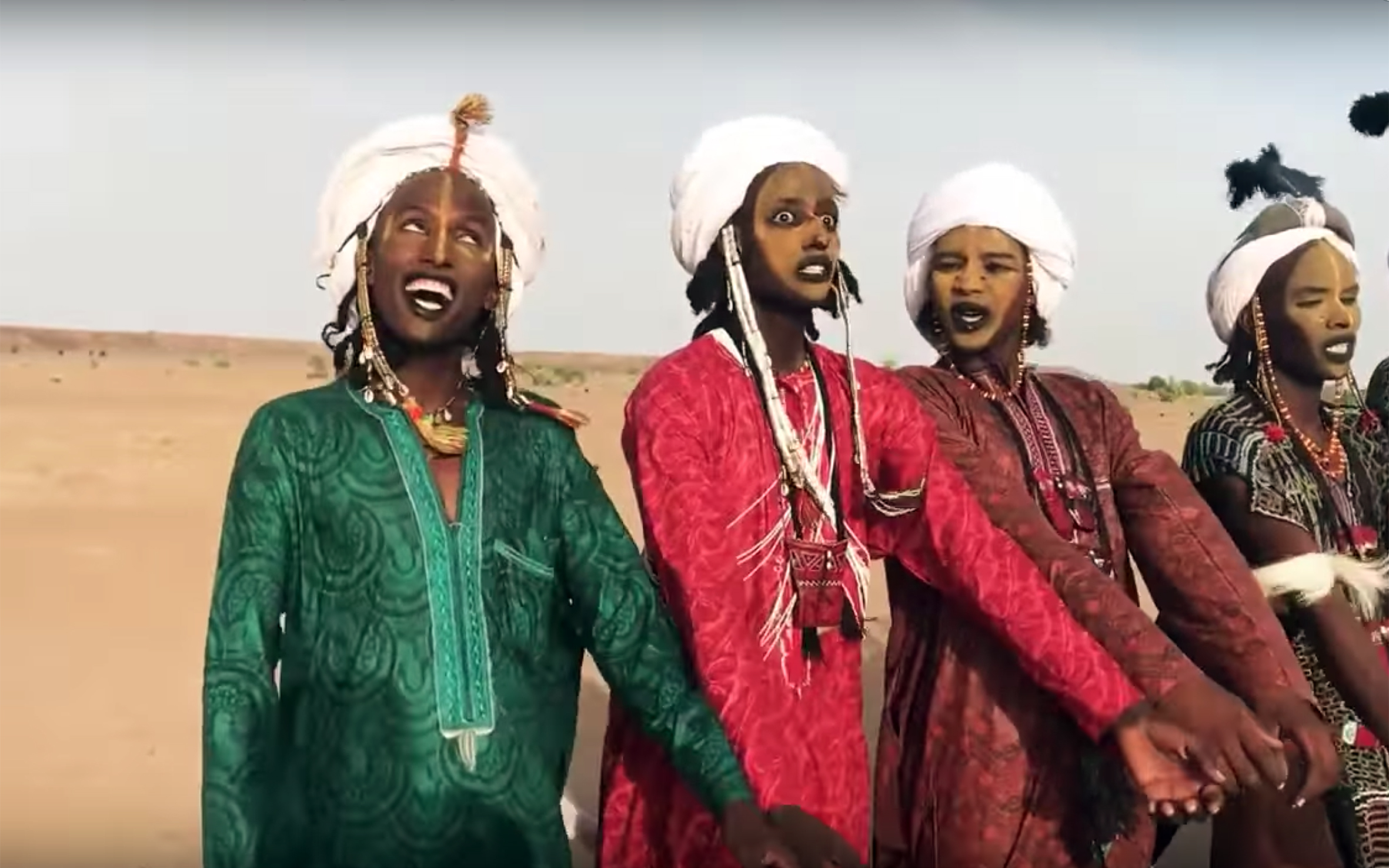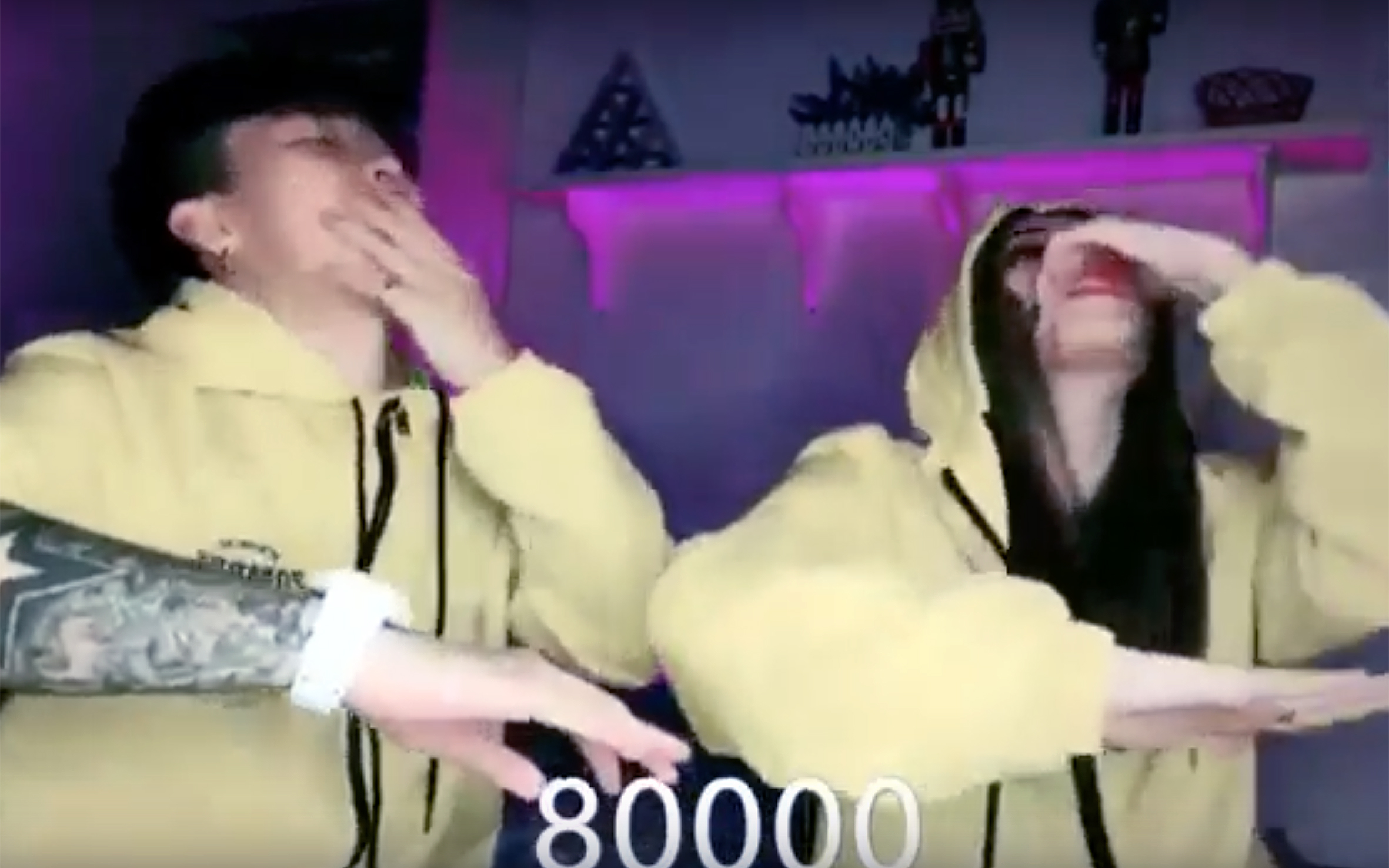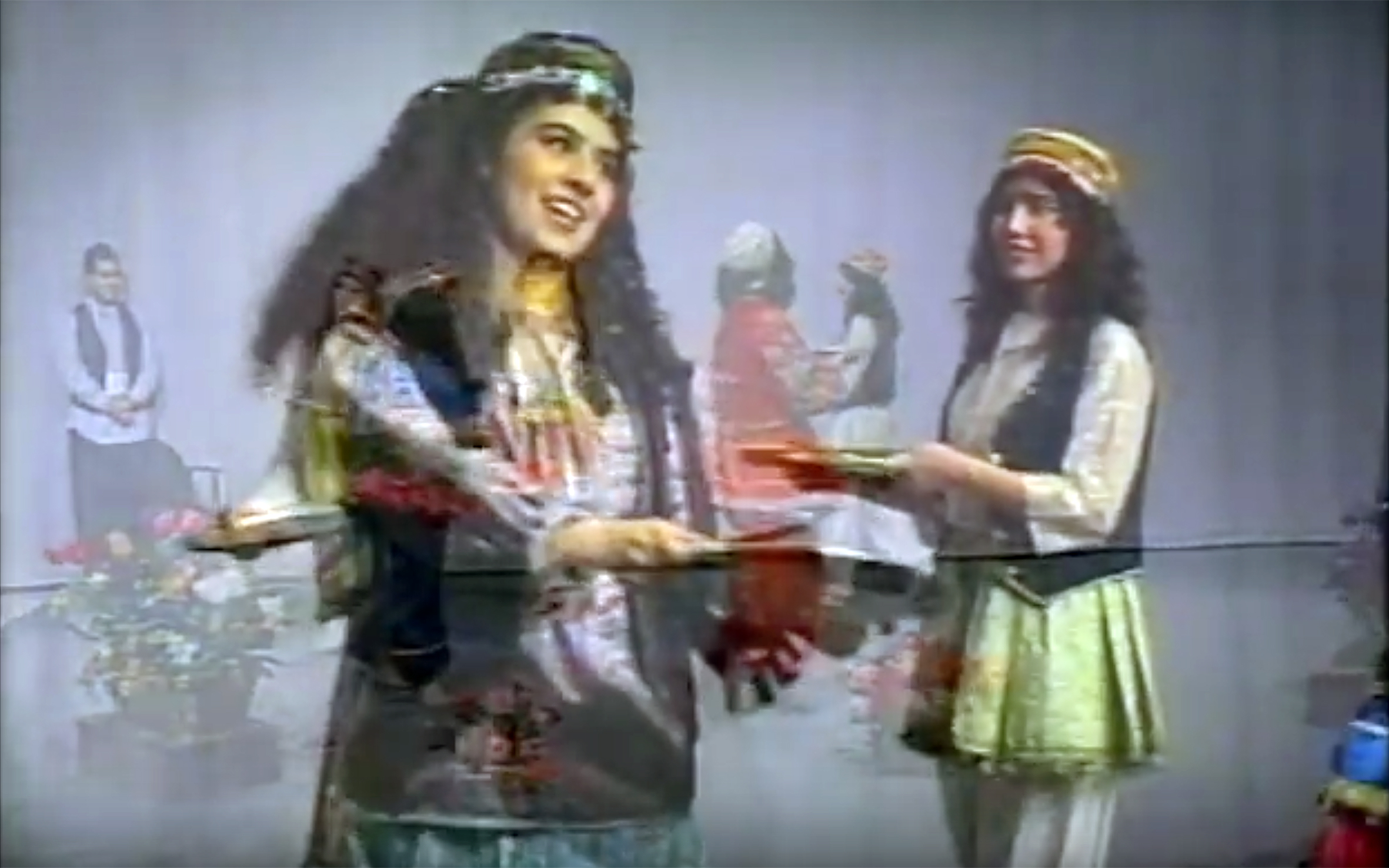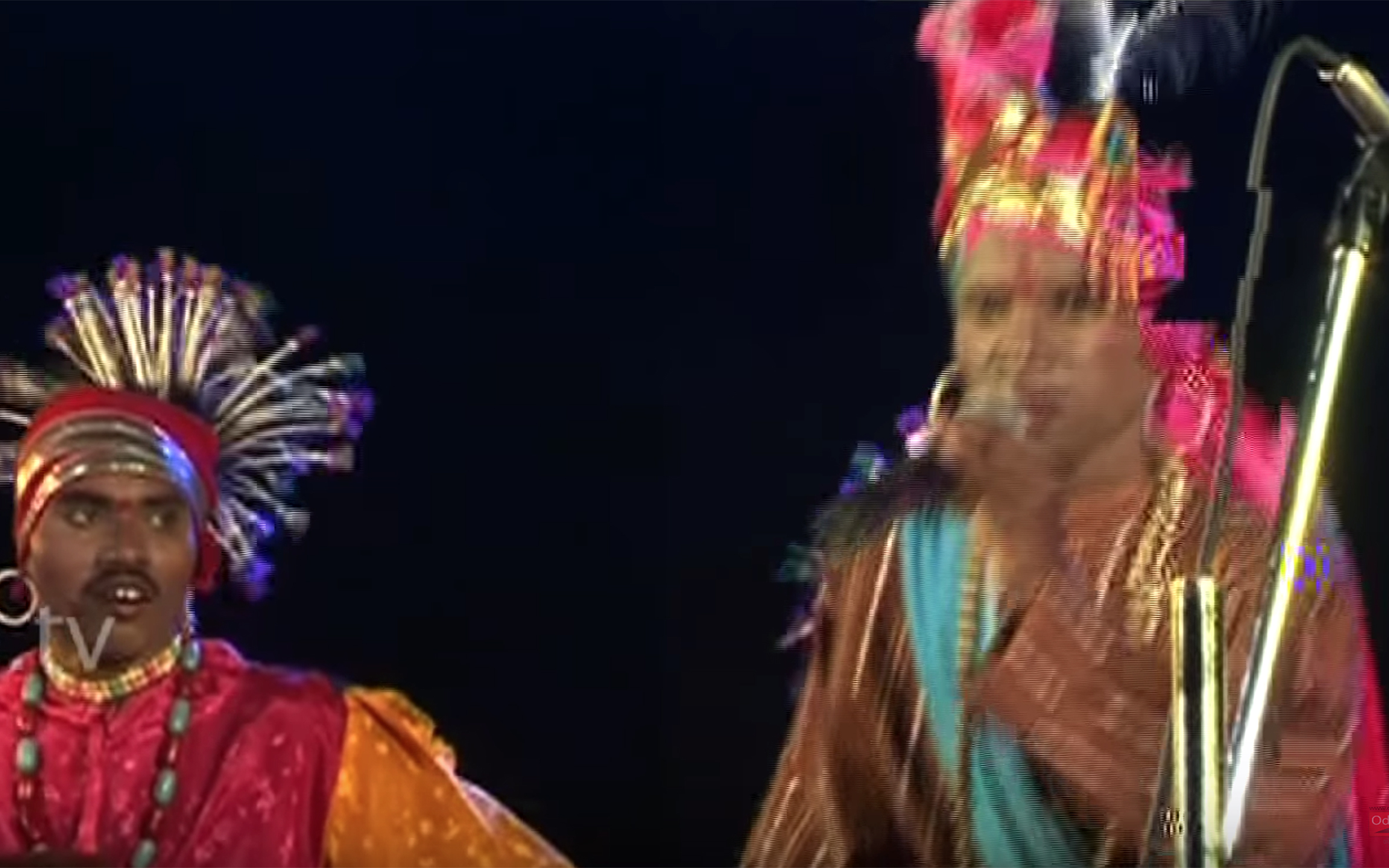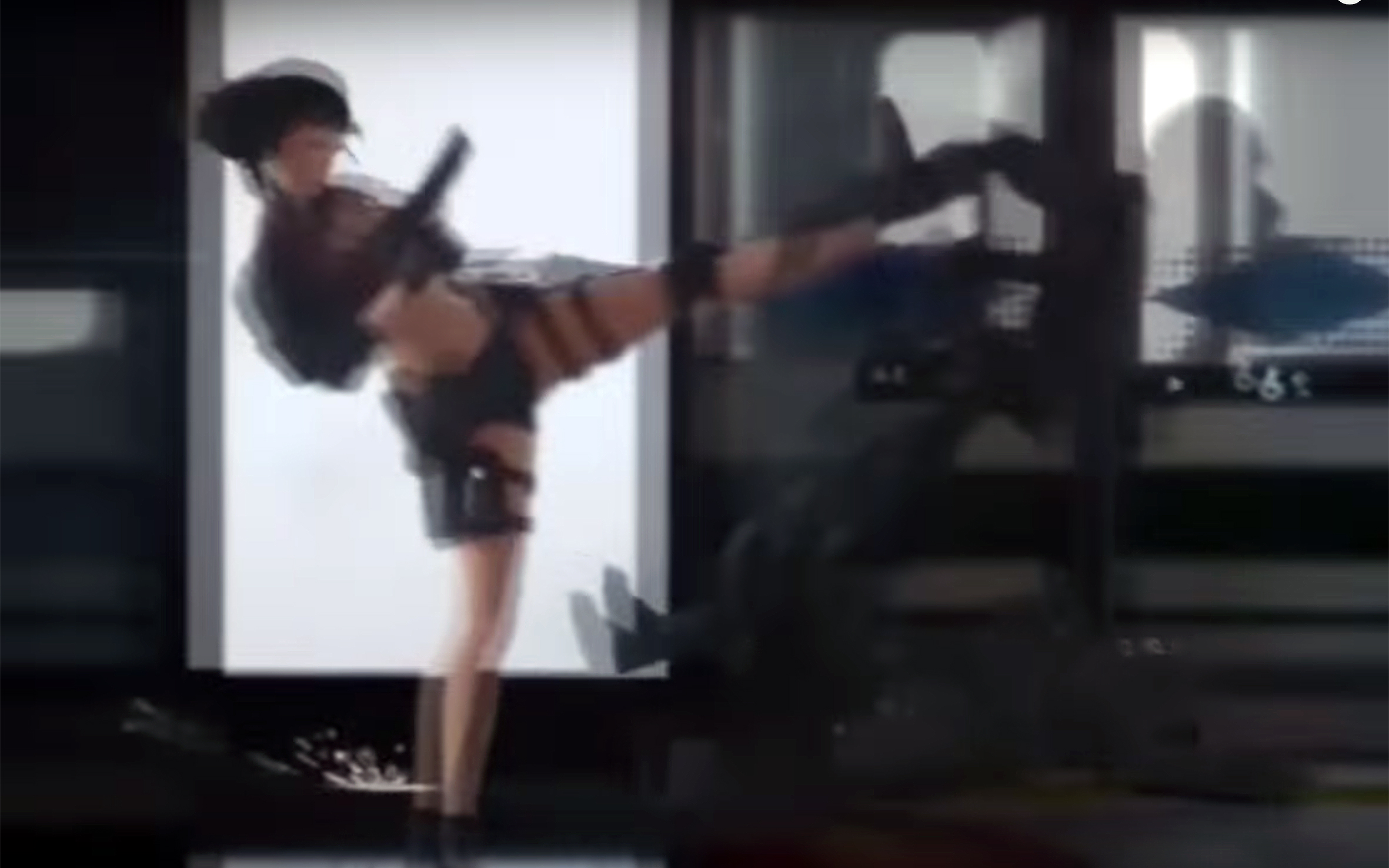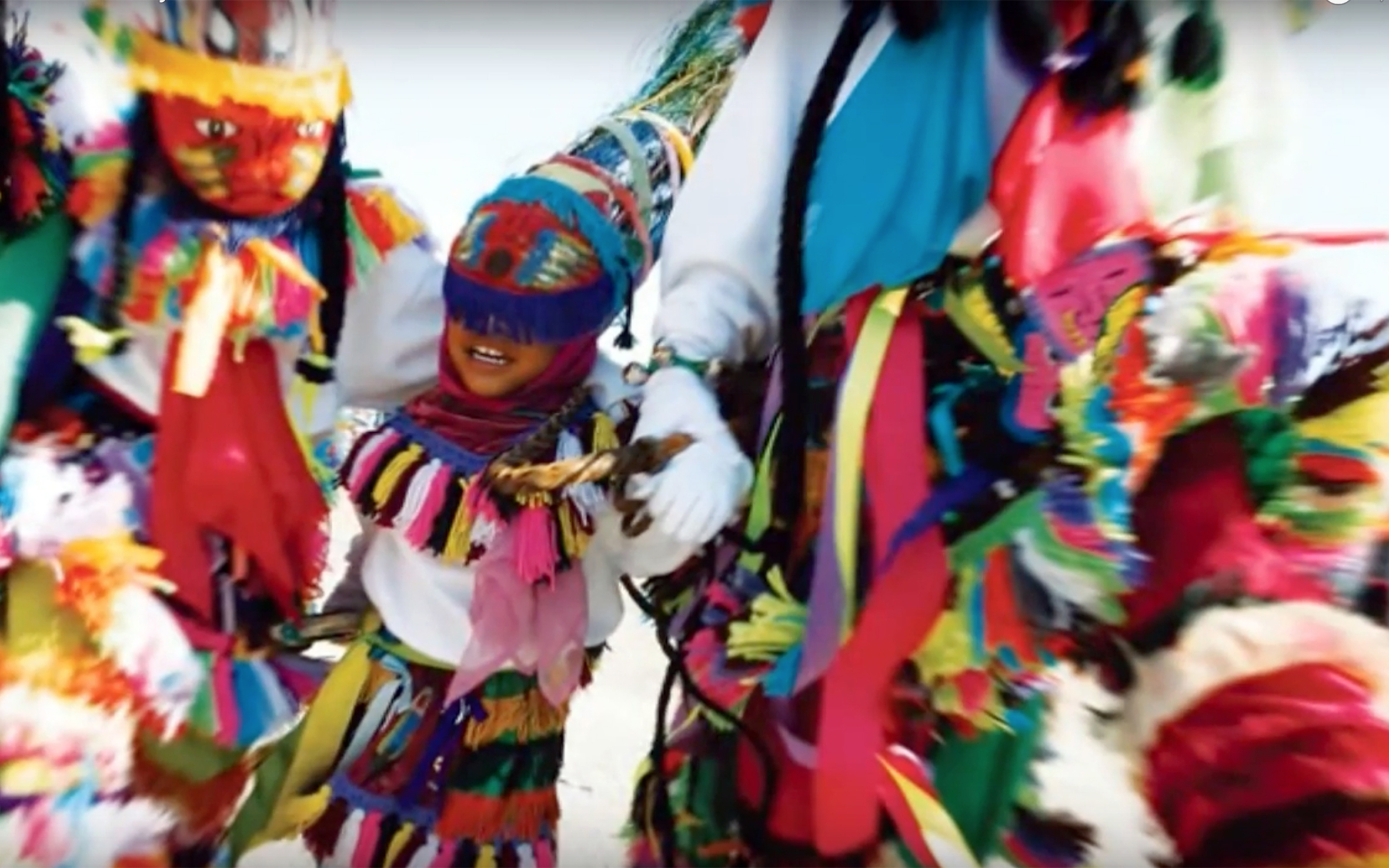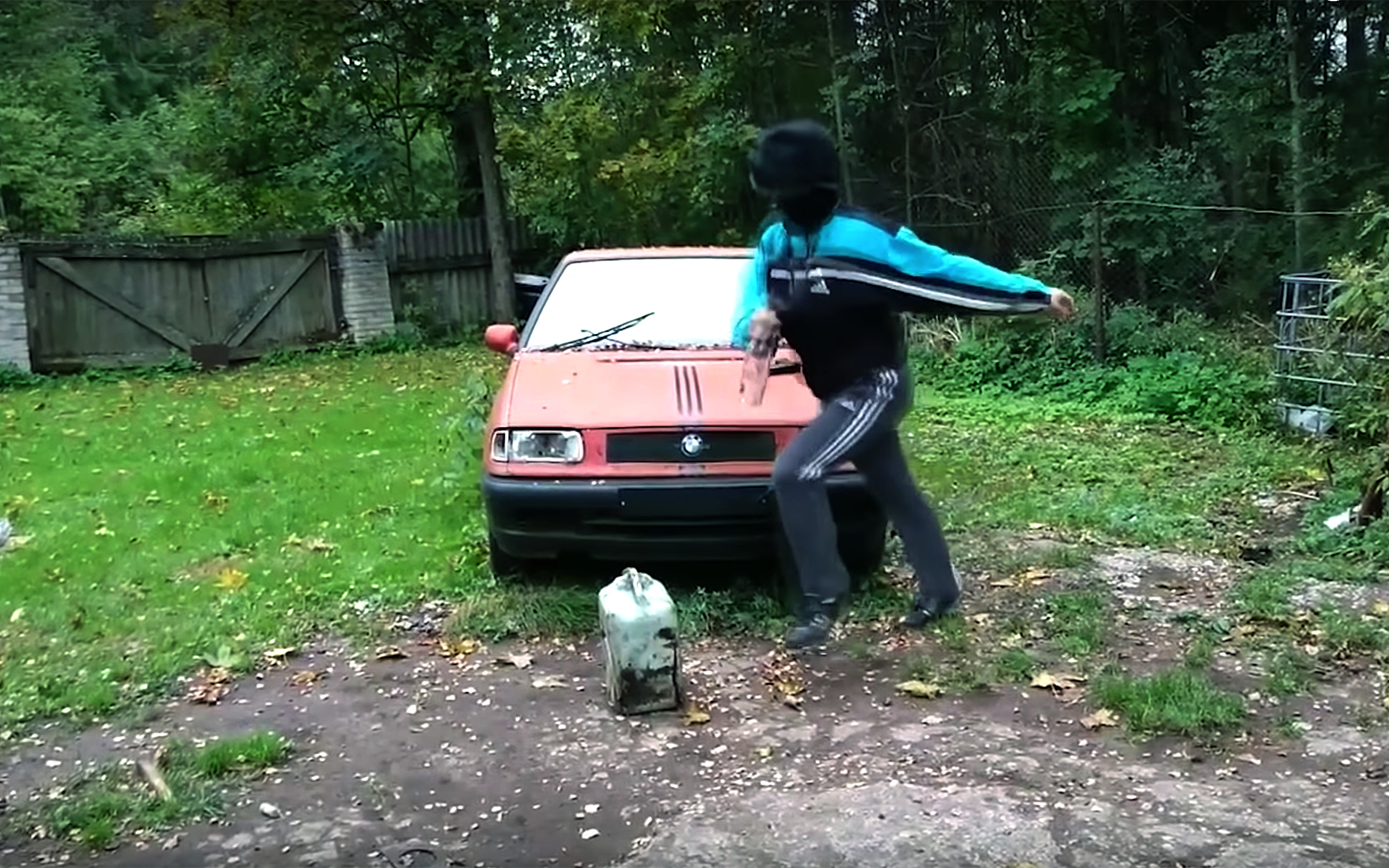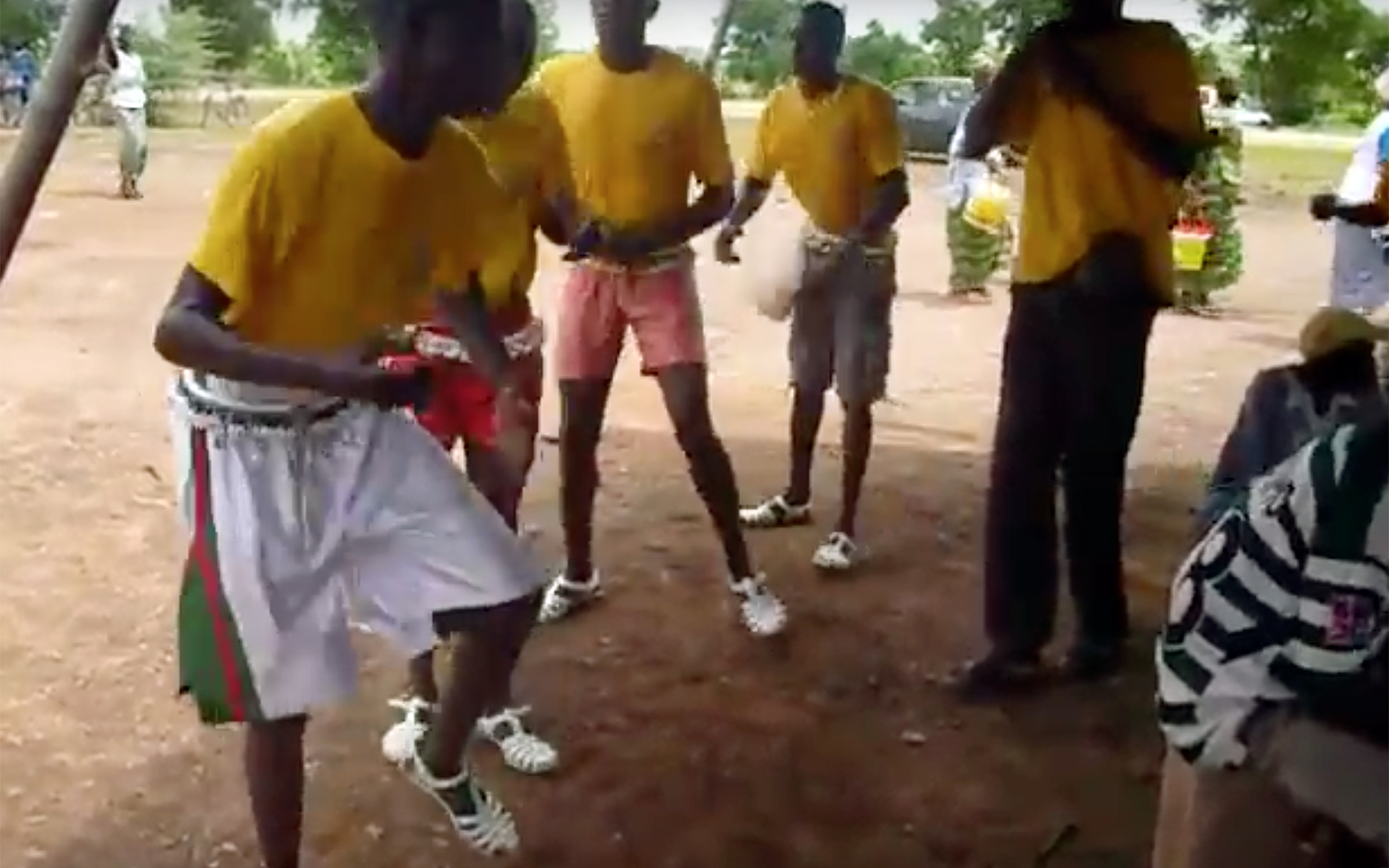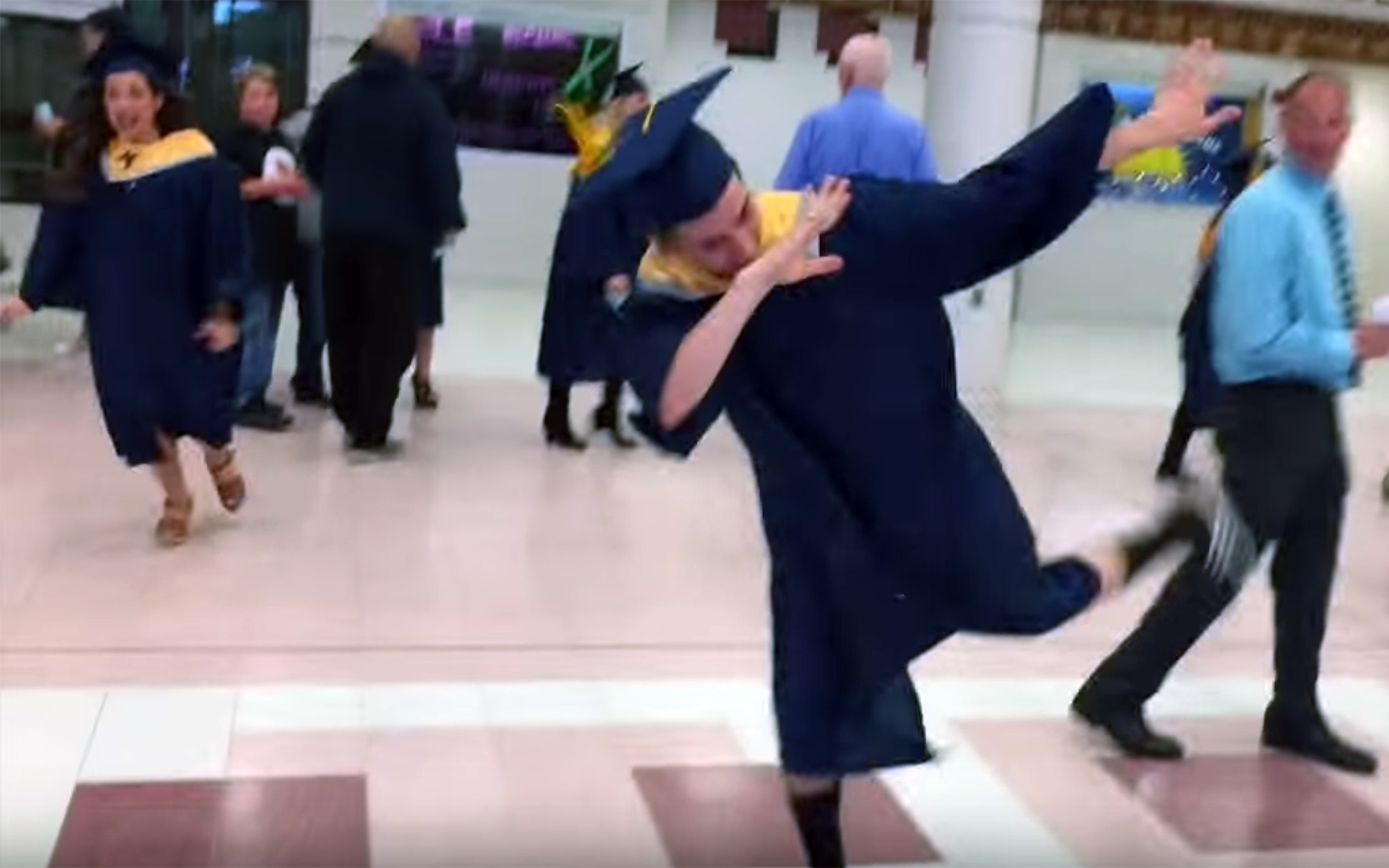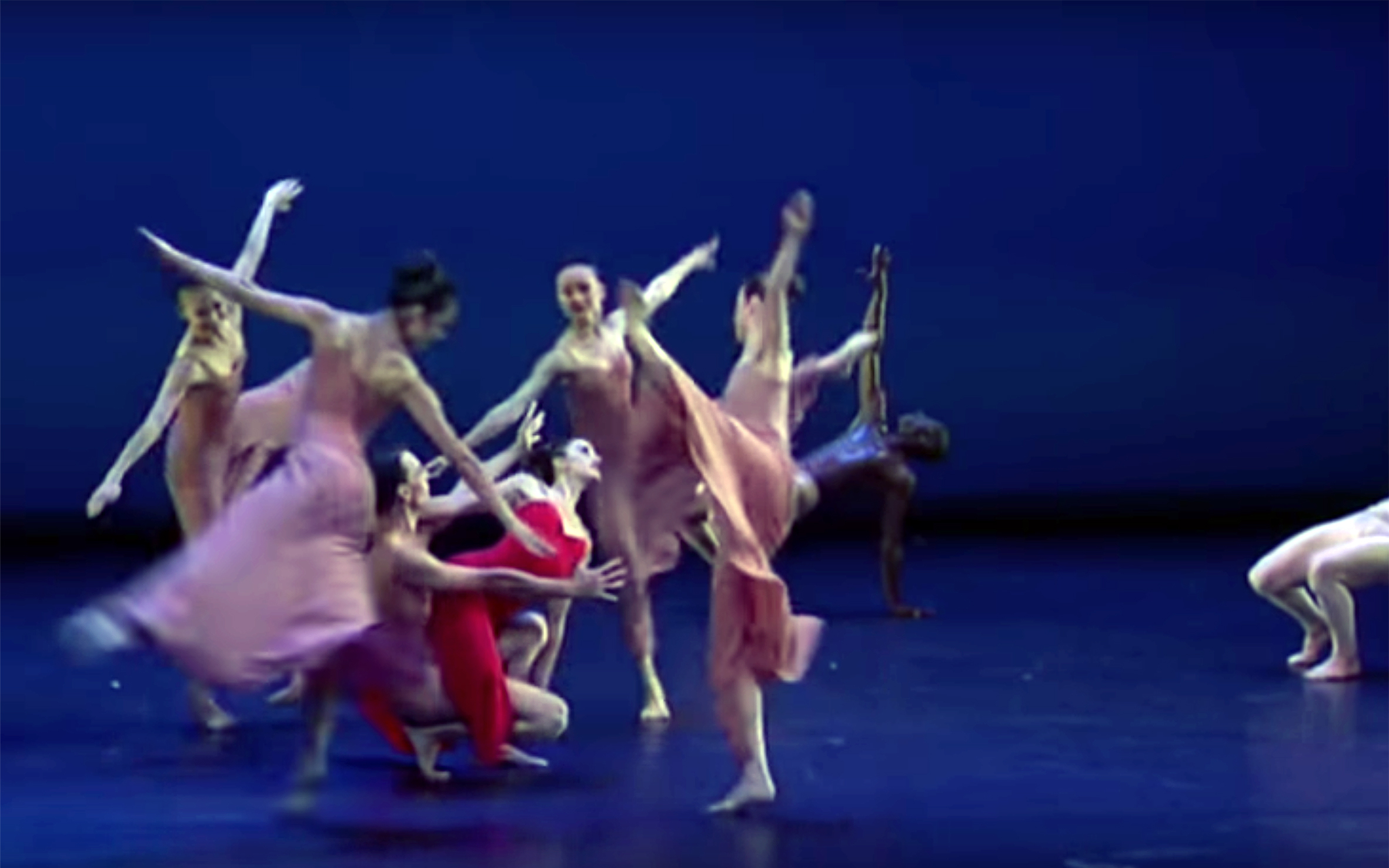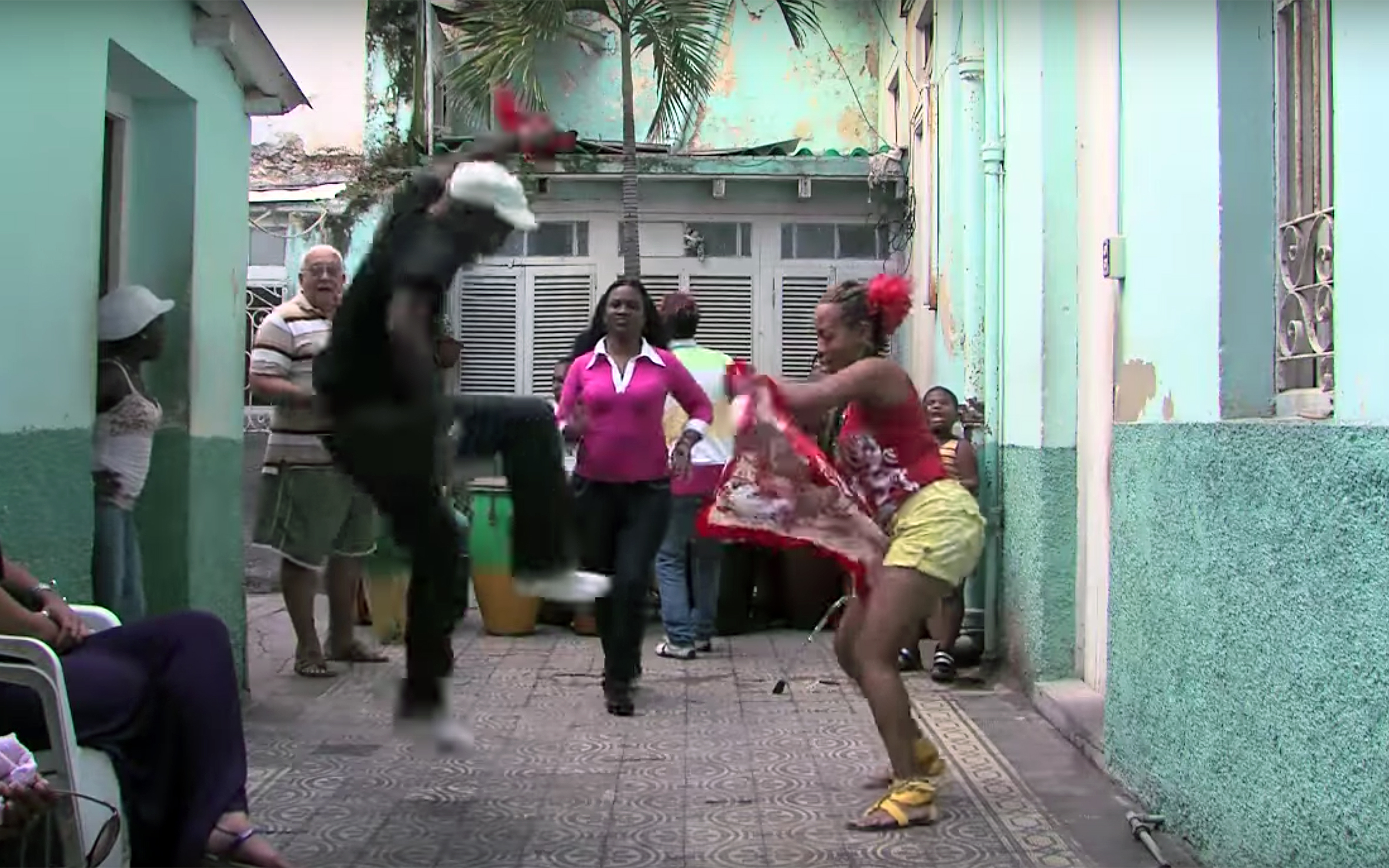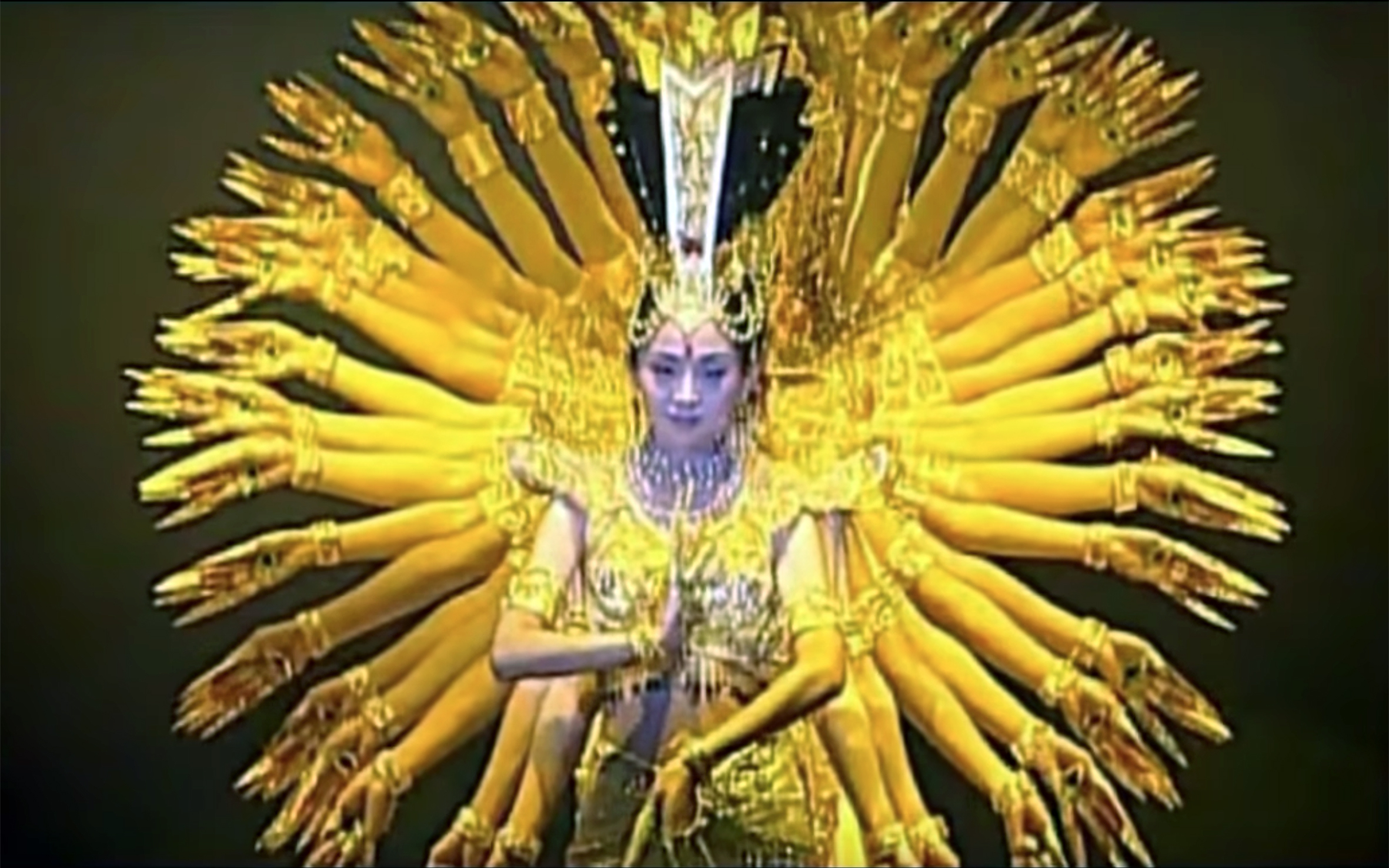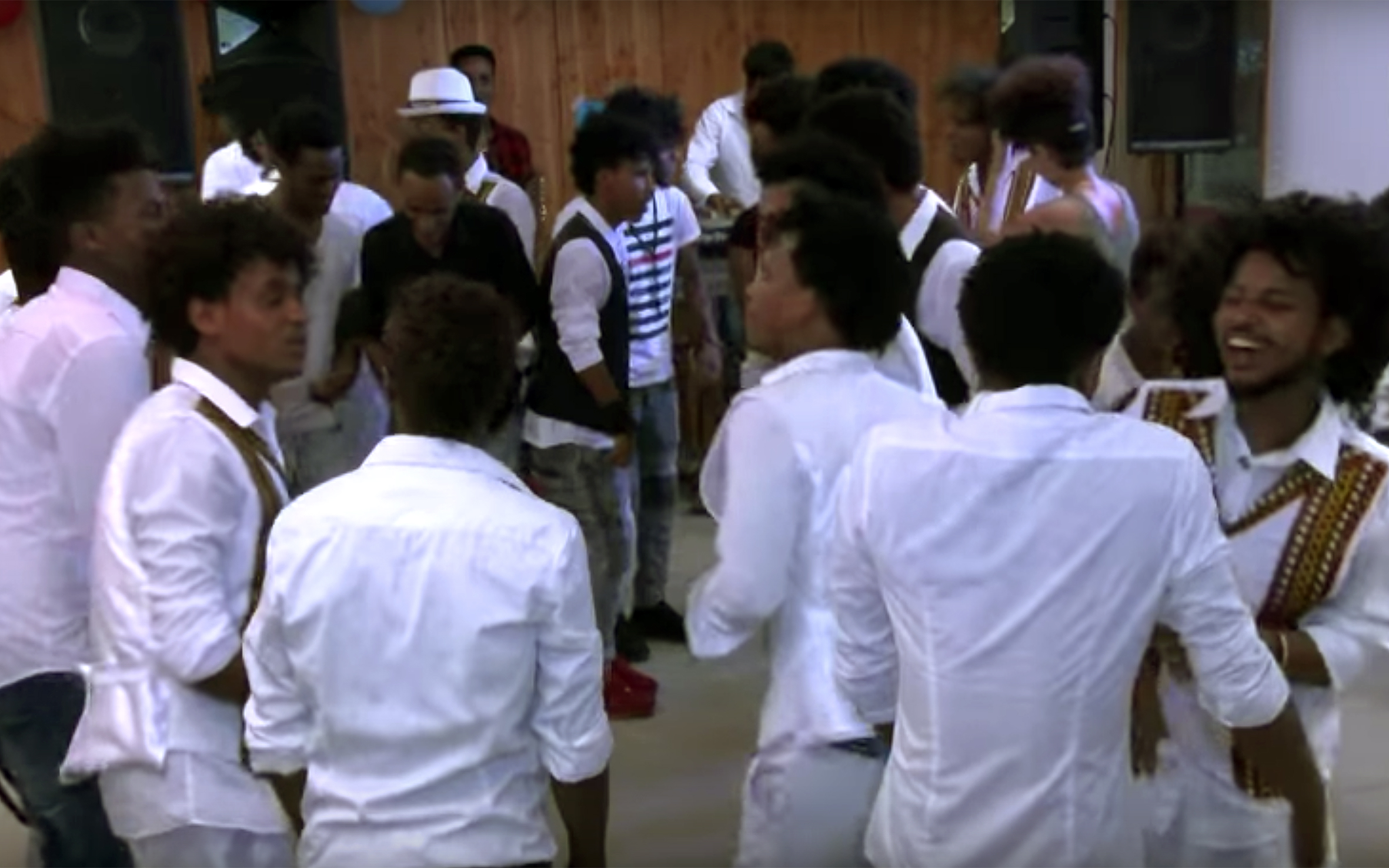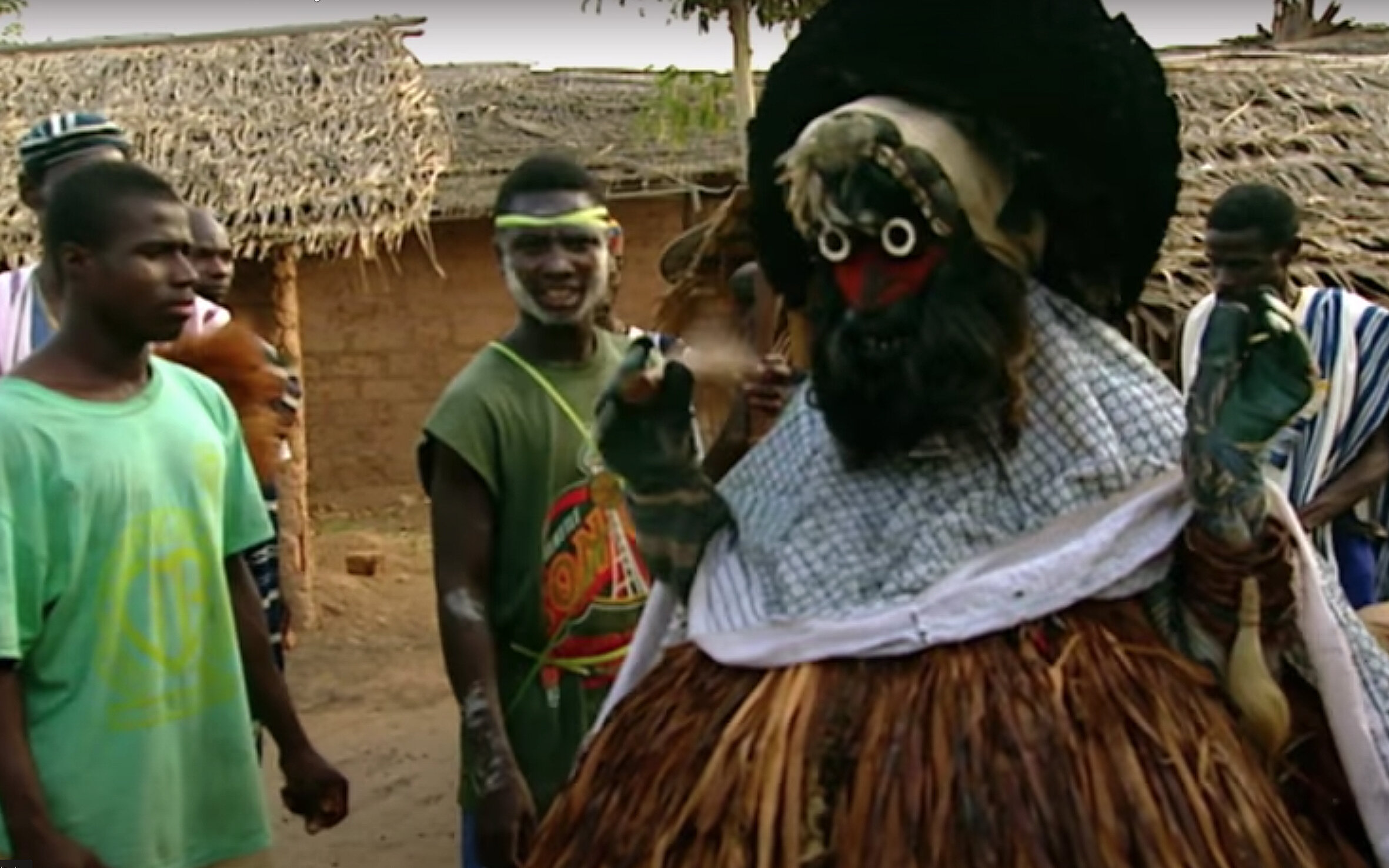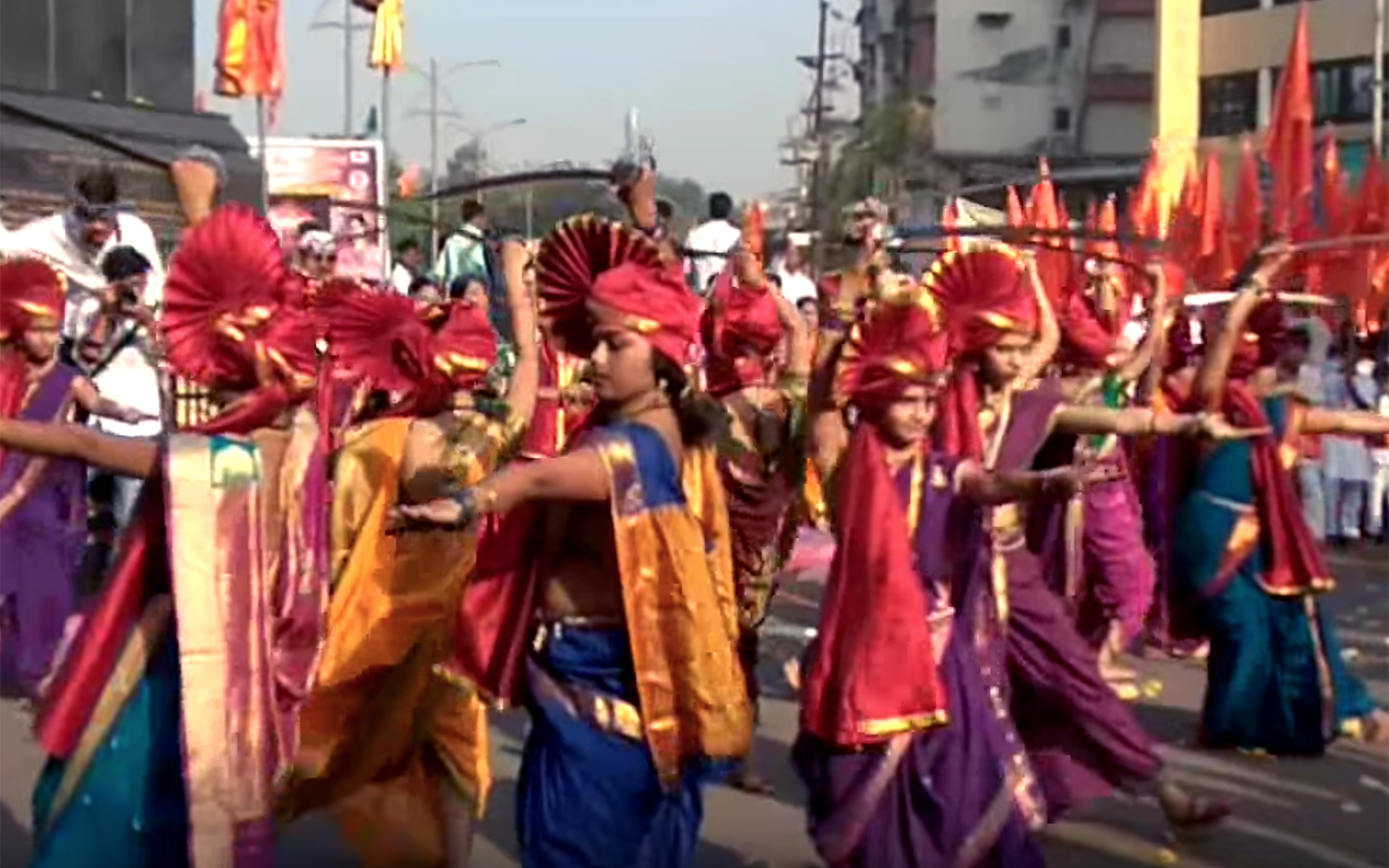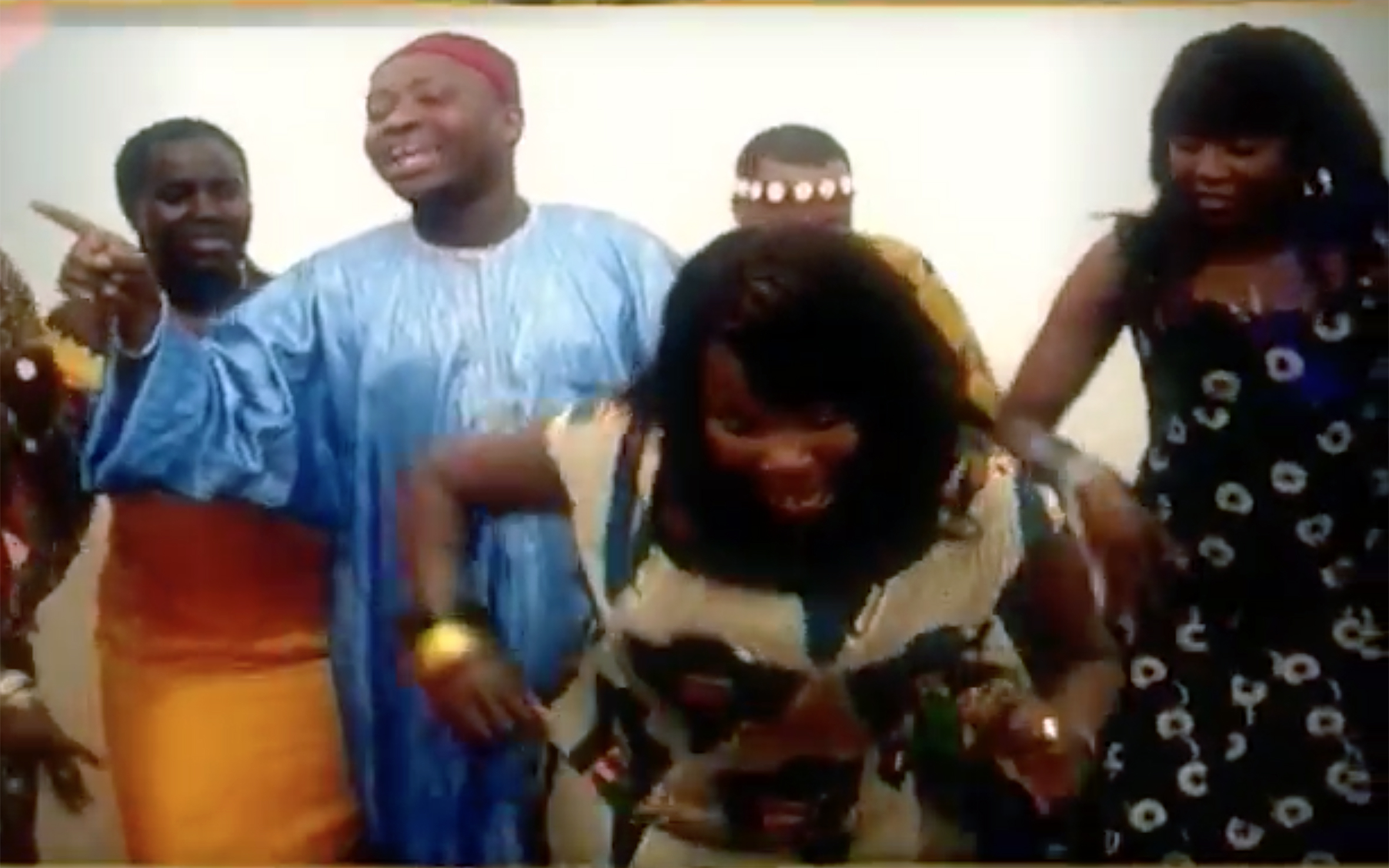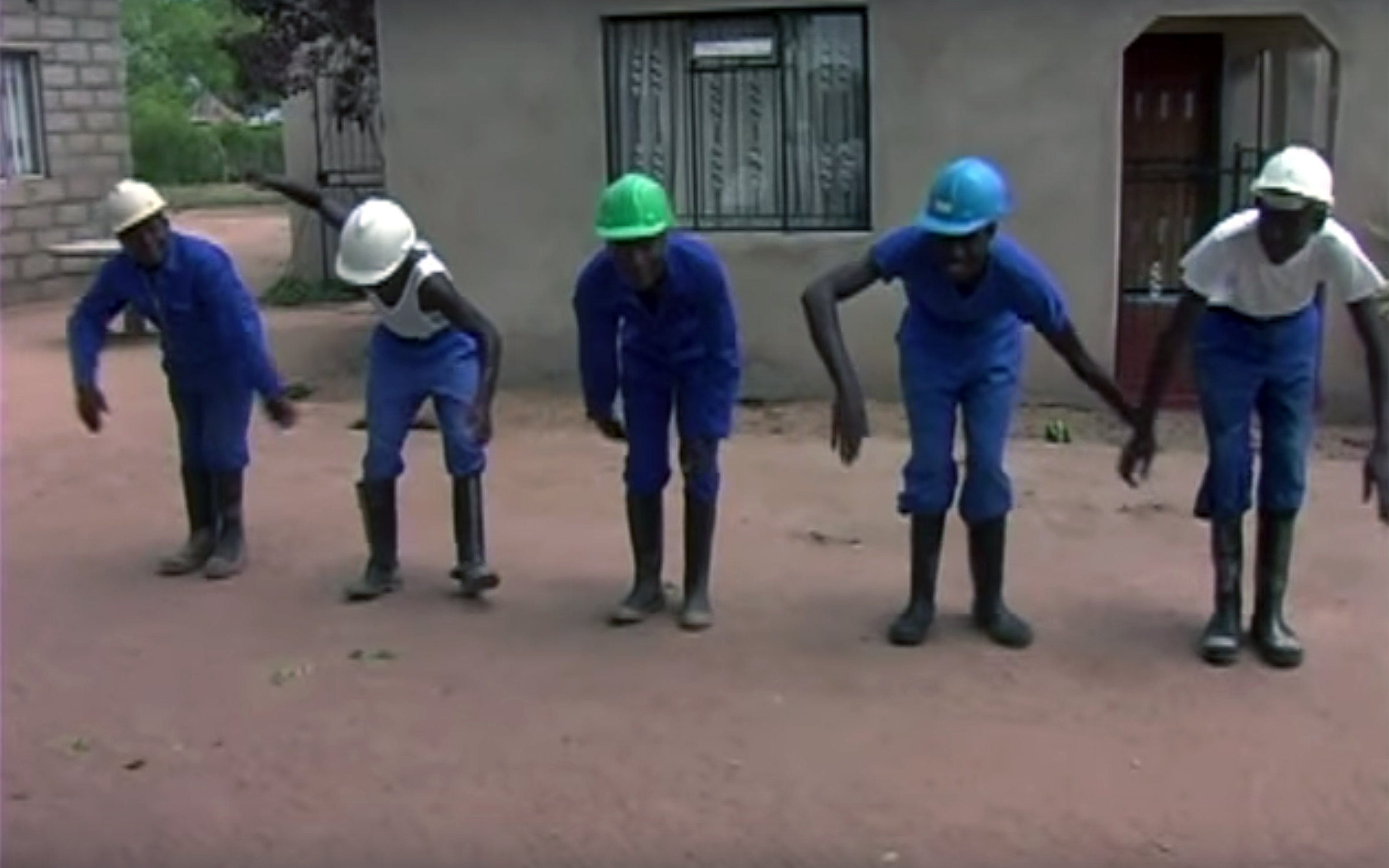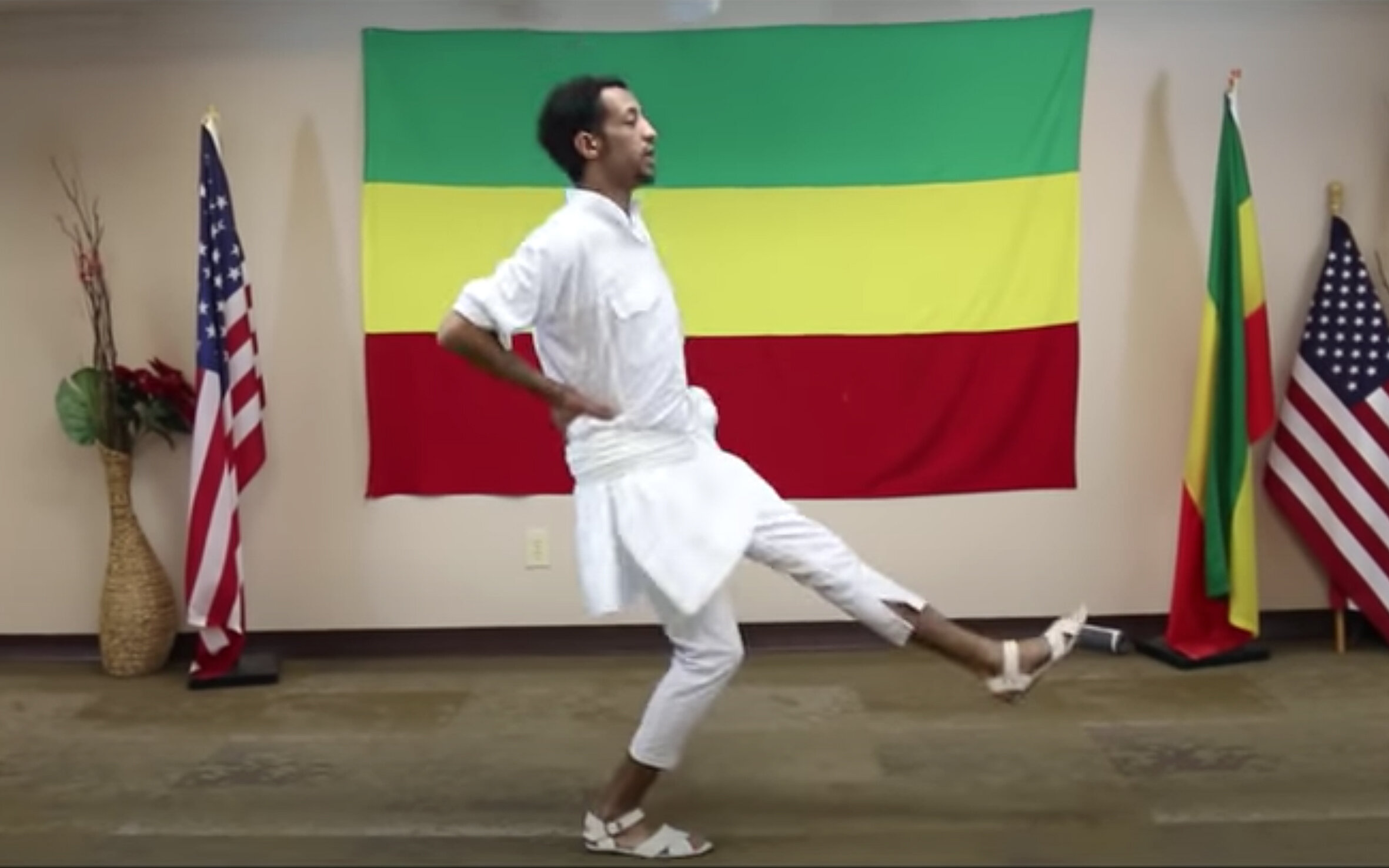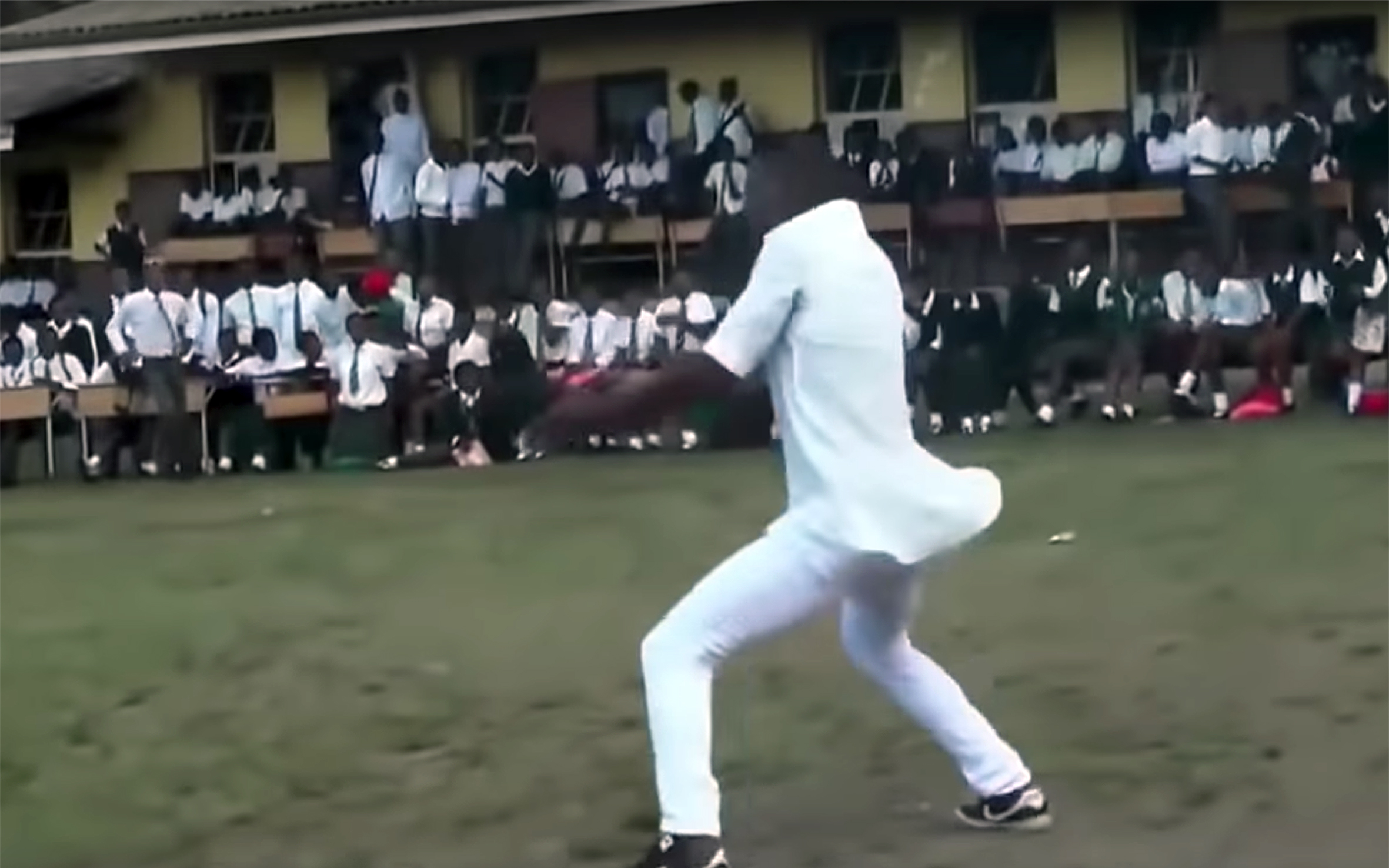308.Gabber / The Netherlands
GABBER is the only Dutch subculture that got known globally and is now called hardcore after the music hardstyle genre that it is performed to. Gabber dance consists of small steps that quickly follow each other to the rhythm of the bass drum. The lower body is the most important part, though it is not unusual to move the arms and torso too. Because one is supposed to keep up to the beat of the song, the dancers move fairly quickly.
309.GAGA / Israel / Global
GAGA is a movement language and pedagogy developed by Batsheva Dance Company director and teacher Ohad Naharin. It is used in Israeli contemporary dance and has two educational tracks which are taught in Israel and several other countries: Gaga/Dancers is intended for trained dancers and comprises the daily training of the Batsheva Dance Company; Gaga/People is designed for the general public and requires no dance training. Many dancers have stated that after taking Gaga classes, their passion for dance has been re-ignited and they have found new ways to connect to their inner beast without being self-conscious about how it looks and finding how to listen to their bodies.
310.Gagnam Style / South Korea / Viral
GANGNAM STYLE is the name of a pop song by South Korean musical artist Psy and his massively viral music video with the famous, much-imitated dance performed in it. It is named after Gangnam, a district in Seoul and one of the richest and most glamorous places in South Korea, which is a symbol of conspicuous consumption and materialism. The song was released with a music video featuring a distinctive dance, called the “horse dance”. It consists of shuffling the feet with the legs bowed. The hands are crossed at the wrist and flicked as if holding the reins of a horse. It had skyrocketed in popularity across the globe by the end of summer 2012 and as of 2017, the video was the most-watched video on YouTube of all time, nearing three billion views.
311.Galopera / Paraguay
GALOPERA is a Paraguayan folk dance without fixed choreography, improvised and traditional, therefore choreographies can be created according to tastes and creativity. At the same time, it is a musical genre, derived - according to ethnologists - from Polca Paraguaya.
312.Galuç / Turkey
GALUÇ is a dance from the Hallun village of Adiyaman Galuç in Turkey and it depicts the struggle of the villagers fighting a poisonous weed called Galuç. Village men get up early in the mornings before planting season to eradicate the weed from the fields. At noon, the women bring their lunch in buckets and water in gourds. After lunch is consumed, the men get back to work. When the field is finally cleared of the weed, the men celebrate the occasion by performing the dance. Women join them, carry the gourds on their shoulders while men go through the symbolic motion of chopping the weed with their sickles.
313.Gambella DANCES / Ethiopia
GAMBELLA DANCES from Gambella region in Ethiopia are characterised by the agile spin of the waist. The women dance while hurling a fringe decorated with cowrie. They dance using their entire body while playing the instrument (fringe) which makes a special type of sound.
314.GANGSTA WALK / USA
GANGSTA WALK, often referred to as: G-WALK , BUCKIN, TICKIN, JOOKIN, or CHOPPINis a street dance that originated in Memphis, Tennessee alongside “Buck” music during the 1990s. It is commonly performed to crunk music due to the particular bounce in the beat and the movement the dancers make to keep with it. Though it has been around for many years, much of the dance is still exclusive to the city and surrounding areas. Along with being a popular street dance, the gangsta walk is often viewed as a form of self-expression and relief from the hardships of living within the inner city. The dance can commonly be found in urban areas of Memphis like North Memphis, South Memphis, Orange Mound, Whitehaven, West Memphis, etc.
315.GANVIE / Benin
GANVIE DANCE is a term to describe traditional dances of the Ganvie people, population of around 20,000, living in the probably largest lake village in Africa, near Cotonou in Benin.
316.gaRADI / India
GARADI is a dance of mythological origin, performed during all festivals and at any occasion in the region of Pondicherry, India. One dance lasts from five to eight hours and it is based on various mimicry characters—male dancers imitate gestures and posture of the monkeys.
317. GARBA / India
GARBA is a dance style which originates from the state of Gujarat in India. It comes from the Sanskrit word for “womb” and so implies “gestation” or “pregnancy”. Traditionally, the dance is performed around a clay lantern with a light inside, called a Garbha Deep (“womb lamp”). This lantern represents life—the fetus in the womb. The dancers honor Durga, the feminine form of divinity. Garba is performed in a circle as a symbol of the Hindu view of time, with rings of dancers revolving in cycles, as time in Hinduism is cyclical.
318.Garifuña dance / Belize
GARIFUÑA DANCE is a term describing traditional dances performed by the Garifuña people in Belize, indigenous of mixed-race descendants of West African, Central African, Island Carib, European, and Arawak people. Garifuña culture in Belize displays many influences of its African heritage. Most of the slaves brought to the Caribbean were taken from the Niger and cross Delta regions in the Bight of Benin (present-day Nigeria) in West Africa, and from further south from Congo and Angola. Much like the music of these areas, the Garifuña style of music relies heavily on call and response patterns. In accompaniment to their music traditions lie the Garifuña songs and dance styles, which are an integral part of their culture. The dances display a wide range of subjects like work songs, social dances, and ancestral traditions.
319.Garland Dance / England
GARLAND DANCE is an English dance tradition that began in the 19th century in mill towns in North England. The Industrial Revolution was centralising people, bringing rural folk to factory work. As country girls moved to new industrial cities, they brought with them dancing traditions from many rural areas. Garland dancing was a new combination of familiar movements, made more picturesque by flower-covered garlands. Mill owners encouraged garland dancing as a form of healthful exercise that also brought beauty to company events and town parades.
320.Gathigiriri / Kenya
GATHIGIRIRI is a new urban dance style originating from Gathigiriri settlement in Kenya, performed first in a popular dance video by Kymo & Stigah.
321.Gauna Nritya / Nepal
GAUNA NRITYA is a dance based in Mithila Tradition and popular in the Janakpur region of Nepal. It is usually performed on religious occasions.
322.Gbame / Togo
GBAME is a traditional dance from Togo.
323.GBE GBE / Ivory Coast
GBÉGBÉ is a traditional dance of the Bété people from Ivory Coast. It starts with stamping the feet right, left, right, left. Then the middle dancer wiggles his arms and the other dancers run around the middle dancer. Afterward, the dancers pair up and spin around each other. After that, all the dancers wiggle their arms and touch the floor with their right arm. And then they slap their waists and look side by side. Then they run and almost collide with each other and spin while doing so. Gbégbé is performed at public celebrations or funerals.
324.Gerewol / Niger
GEREWOL is a type of courtship dance and an annual ritual competition among the Wodaabe Fula people of Niger. Young men dressed in elaborate ornamentation and made up in traditional face painting gather in lines to dance and sing, vying for the attention of marriageable young women. They adorn themselves with beads and feathers, trying to make themselves attractive to the females who act like they’re blasé about it all but end up choosing the one they like best. Gerewol takes place every year as the traditionally nomadic Wodaabe cattle herders gather at the southern edge of the Sahara before dispersing south on their dry season pastures. The most famous gathering point is In-Gall in northwest Niger, where a large festival, market, and series of clan meetings take place for both the Wodaabe and the pastoral Tuareg people.
325.Gesture dancing / China / Viral
GESTURE DANCING is a hot dancing phenomenon on a Chinese music video and social network platform called Douyin. The dancing expresses the rhythm by using hands. In March 2018 it got viral around the Chinese Internet and everyone started to imitate it. Through the movements of fingers, wrists, joints, rotations, jumps, etc., the gesture dance is unpredictable.
326.Ghasem Abadi DANCE / Iran
GHASEM ABADI is a dance originating from Ghasem Abad village in Guilan province, in Northern Iran, near the Caspian Sea. It is a rice-harvesting chain dance of the Gilaki people, performed in local costumes to happy Gilaki folk music. It is inspired by happiness during the harvesting season.
327.Ghatu Nritya / Nepal
GHATU NRITYA is a popular dance among the Gurung community of Nepal. Mainly 10-19 years old girls in traditional costumes perform the dance singing mantras.
328.GHOOMAR / India
GHOOMAR is a traditional Indian folk dance of the Bhil people, originally performed for worshipping goddess Saraswati. Originating in Marwar, it is traditionally performed during auspicious occasions, including the onset of rains, Diwali, Holi and on a bride’s arrival at her marital home. Ghoomar is a folk dance that is also a symbol of womanhood, a “rite of passage” in which young girls participate, declaring that they are entering womanhood.
329.Ghumura / India
GHUMURA is one of the leading folk dance styles in Odisha, India. It is claimed to have been a war dance in ancient India and used by Ravana in Ramayana. Ghumura is depicted in Sun Temple of Konark confirming the presence of this dance during the medieval period. It was also used as a Darbari dance in the princely state of Kalahandi and played by the erstwhile Kalahandi state during war times. The typical mixed sound that comes out of the musical instruments like Ghumura, Nishan, Dhol, Taal and the expressions and movements of the artists make this dance a “Heroic Dance”. Over thousands of years Ghumura has evolved from a war dance to a dance for cultural and social activities, associated with social entertainment, relaxation, love, devotion and friendly brotherhood among all class, creed and religion in the present days.
330.Giddha / India / PAKISTAN
GIDDHA is a popular folk dance in Punjab region of India and Pakistan. It is often considered to be derived from the ancient dance known as the ring dance and is just as energetic as Bhangra. Women perform this dance mainly at festive or social occasions, as it creatively shows feminine grace, elegance and flexibility. The dance is followed by rhythmic clapping and a typical traditional folk song is sung by the aged ladies in the background.
331.GIF Dance / Global
GIF DANCE is a dance presented in gif animations. GIF stands for Graphics Interchange Format and it is a bitmap image format that supports up to 8 bits per pixel for each image, allowing a single image to reference its own palette of up to 256 different colours chosen from the 24-bit RGB colour space. It also supports animations and allows a separate palette of up to 256 colours for each frame. GIF dancers are widespread on the Internet.
332.GIOCA JOUER / Italy / Spain / UK / Viral
GIOCA JOUER was a song written by Italian musicians Claudio Cecchetto and Claudio Simonetti in 1981. It was a great success in Italy, and was also the Festival di Sanremo of 1981 opening theme. The same summer, it arrived in Spain and became very popular in discos. Translated into English, it was called “Superman” and got popular in the UK. The song featured a number of dance gestures that acted out the lyrics, such as walking, swimming, skiing, spraying deodorant, sounding a horn, ringing a bell, flexing muscles as a “Macho Man” and flying like a Superman. These dance moves were detailed on the record sleeve of by Black Lace. In 1987, Colin Gibb released an alternative version of the song with explicit lyrics, entitled “Supercock”.
333.Giriama Dances / Kenya
GIRIAMA DANCES are traditional dances performed by the Giriama people, an agricultural and hunter-gathering Bantu-speaking people of the larger Mijikenda (Nyika) ethnic group living along with the coastal areas of Kenya.
334.GNAWA / Morocco
GNAWA refers to spiritual music and dance that finds its roots in sub-Saharan Africa, tracing back to the region’s history with slavery, currently performed in Morocco and other parts of the Maghreb. Trance plays an important role in this type of music and dance, insofar it refers to religious and mystical phenomena. The music is performed at “lila”, entire communal nights of celebration dedicated to prayer and healing guided by the Gnawa “maalem”, or master musician, and their group of musicians and dancers.
335.Goa Trance / India / Global
GOA TRANCE is a dance style performed to the electronic music that developed around the same time as Trance music became popular in Europe. It originated during the late 1980s and early 1990s in the Indian state of Goa. Trance music was pop culture’s answer to the Goa Trance music scene on the beaches of Goa where the traveler’s music scene has been famous since the time of the Beatles. Goa Trance enjoyed the greater part of its success around 1994-1998, and since then has dwindled significantly both in production and consumption, being replaced by its successor, Psytrance.
336. GOMBEY / Bermuda
GOMBEY is a dance from Bermuda, mixture of British, West African and indigenous new-world cultures. It refers to a specific type of drums of African origin. Some also relate Gombay to a Bantu word standing for “rhythm”. It is quite similar to Mummers, seasonal folk play performed by troupes of actors during Afro-Caribbean styles of celebrations. Usually male dancers perform Gombeys in groups of 10-30 in masquerade costumes with bright colors and odd angles. The costume designs often reflect the plumage of tropical birds. The energetic dance gradually picks up and grows faster with time and becomes a great spectacle. Tradition of Gombey dance is passed on through generations through personal coaching. The captain of each troupe decides the style the troupe would specialize in with subtle differences in beats, dances and costumes.
337.Gopnik Dance / Russia / Ukraine / Latvia
GOPNIK DANCE is a dance performed by Gopniks, a particular subculture in Russia, Ukraine, and other former Soviet republics, young men or women of sometimes lower-class suburban areas (usually under 25 years of age) coming from families of poor education and (sometimes) income. Gopniks are often seen squatting in groups outside blocks of flats or schools. They are often seen wearing Adidas tracksuits, which were popularised by the 1980 Moscow Olympics Soviet team. Gopniks are often associated with cheap alcohol, such as low quality vodka and light beer, and cheap cigarettes. Gopnik dance is usually performed informally either on the streets or in the places where Gopniks spend their time.
338.GORA / Burkina Faso
GORA DANCE is a traditional dance performed in Gora village in the southwestern region of Burkina Faso.
339.Gotipua / India
GOTIPUA is a traditional dance form from the state of Odisha, India. It has been performed in Odisha for centuries by young boys, who dress as women to praise Lords Jagannath and Krishna and who perform acrobatics inspired by the life of Radha and Krishna. They begin to learn the dance at an early age until adolescence, when their androgynous appearance changes. In the Odia language Gotipua means “single boy”. To transform into graceful feminine dancers the boys do not cut their hair. They style it into a knot and weave garlands of flowers into it. They paint faces with mixed white and red powder, and apply kajal around the eyes. Bindi, usually round, is applied on the forehead, surrounded by a pattern made with sandalwood. Traditional paintings, unique to each dance school, adorn the face.
340.Graduate dance / Global
GRADUATE DANCE are various dances performed by graduate students upon completion of their studies at their graduation ceremonies or celebrations.
341.GRAHAM / USA
GRAHAM is a technique of a modern dance and pedagogy created by American dancer and choreographer Martha Graham (1894- 1991). Graham technique has been called the “cornerstone” of American modern dance and has been taught worldwide. It is widely regarded as the first codified modern dance technique, and strongly influenced the later techniques of Merce Cunningham, Lester Horton and Paul Taylor. It is based on the opposition between contraction and release, a concept based on the breathing cycle which has become a “trademark” of modern dance forms. Its other dominant principle is the “spiralling” of the torso around the axis of the spine. Graham technique is known for its unique dramatic and expressive qualities and distinctive floor work. It is described as powerful, dynamic, jagged and filled with tension.
342. GRAVITY DANCE STEP / USA / Global
GRAVITY DANCE STEP was first performed by Ariel Oliver in 2017—she pulled off her “invisible step” move that has been retweeted over 120,000 times. Thousands of youngsters were trying to unlock her magic and introduced this step into the move and dance environment of the Internet.
343.Guaguancó / Cuba
GUAGUANCÓ is a Cuban couple dance of sexual competition between the male and female. The male periodically attempts to “catch” his partner with a single thrust of his pelvis. This erotic movement is called the vacunao (“injection”), a gesture symbolising sexual penetration. The vacunao can also be expressed with a sudden gesture made by the hand or foot. Holding onto the ends of her skirt while seductively moving her upper and lower body in contrary motion, the female “opens” and “closes” her skirt in rhythmic cadence with the music. The male attempts to distract the female with fancy (often counter-metric) steps, accented by the quinto, until he is in position to “inject” her. The female reacts by quickly turning away, bringing the ends of her skirts together. Mostly the male dancer does not succeed in “catching” his partner.
344.Guan Yin / China
GUAN YIN is a THOUSAND HANDS DANCE, an East Asian bodhisattva associated with compassion and venerated by Mahayana Buddhists and followers of Chinese folk religions, also known as the “Goddess of Mercy” in English. The Chinese name Guan Yin, short for Guanshiyin, means “(The One Who) Perceives the Sounds of the World”. The Thousand-Hand Guan Yin dance was created by Zhang Jigang. The performance consists of 63 members of the China Disabled People’s Arts Troupe, all of whom are hearingimpaired. Due to their deafness, six choreographers dressed in white cloth guide the performers to synchronise them with the music. First performed in 2005, the production has captivated audiences around the globe.
345.Guayla / Eritrea
GUAYLA is a specific dance form coming from Eritrea, where dance plays a very important social role within nine different ethnic groups. The Bilen, Tigre and Tigrinya groups have dances commonly performed by a group of both sexes in a circle. While the Bilen and Tigre ethnic groups call it Golia, or Sisiit, the Tigrinyas call it Guayla or Kuda. The dance movements have variations: the Bilen and Tigre shake their shoulders while standing only to rotate in the circle towards the end of the dance, whereas, the Tigrinya first dance rotating anti-clockwise but later alter it to fast paced shoulder movements while facing a partner breaking the circular rotation.
346.Guedra / Morocco / Mauritania / Algeria
GUEDRA is a dance particular to Southern Morocco, Mauritania and Algeria. The primary meaning of “guerda” is a cooking pot, covered with a stretched leather skin to create a drum, also known as guedra. The drummer plays a beat representing a heartbeat. The movements of the dancers respond to the beat. Guedra is danced usually by women and is about body language. For the most part, the dancers are covered by a piece of fine fabric whilst performing, but beneath this veil, they are heavily adorned, with henna, jewels and headpieces. The choreographies have varied meanings and depths, where the religious, aesthetic, metaphysical and mythical dimensions are crossing one another. The dance is generally performed in Nomadic tents, and as such the women remain on their knees for much of the performance.
347.GUERE DANCES / Ivory Coast
GUÉRÉ DANCES are traditional dances of the Guéré people from Ivory Coast, performed in spectacular wooden masks. All the masks come from a sacred forest, where only the initiated may enter. Some of the masks dances are performed on stilts, while other dancers do stunts.
348.Gudi Padwa / India
GUDI PADWA is a spring-time festival that marks the traditional new year for Marathi Hindus. It is celebrated in and near Maharashtra, India on the first day of the Chaitra month to mark the beginning of the New Year according to the lunisolar Hindu calendar. The word “padwa” comes from the Sanskrit word “pratipada”, which refers to the first day of a lunar fortnight. The festival is observed with colourful floor decorations, a special Gudi flag (garlanded with flowers, mango and neem leaves, topped with upturned silver or copper vessel), street processions, dancing and festive foods. The dance performed to celebrate this festival is called Gudi Padwa.
349.Gumbe / Guinea-Bissau
GUMBE is a style of dance to a Gumbe music that originated from several musical traditions in Guinea-Bissau. Gumbe music is primarily characterised by its use of polyrhythmic motifs between the guitars and percussion, although originally it was mainly performed with vocals and percussion. It is likely that the goombay music of the Bahamas is related to gumbe music of Guinea-Bissau and was brought over during the slave trade. It is also related to Caribbean zouk music.
350.Gumboot / South Africa
GUMBOOT is an African dance that is performed by dancers wearing wellington boots. In South Africa these are more commonly called “gumboots”. The boots may be embellished with bells, so that they make sound as the dancers stamp on the ground. This sound would be a code or a different calling to say something to another person a short distance away. It was used to communicate in the mines with strict no talking rules. Rooted back in the dark gold mine tunnels of South Africa, gumboot dancing has come full circle. Initially a codified tap used by black miners deprived of conversation, today it is one of the most expressive South African dance genres.
351.Gurage / Ethiopia
GURAGE is an Ethiopian dance that features acrobatic full-body moves of the Gurage people. The dance is fast-paced and involves full-body coordination, as participants move their arms and legs forward and backward while jumping on alternate legs. Major dance moves include hip shaking and fast arm movements. Gurage is typically performed as a group dance to high tempo music, with participants wearing traditional dress.
352.Gurdjieff movements / Global
GURDJIEFF MOVEMENTS is a series of sacred dances collected or authored by G.I. Gurdjieff, taught to his students as part of the work on self-observation and self-study. Gurdjieff movements are not merely exercises in concentration and display of bodily coordination and aesthetic sensibility. On the contrary, in the movements real, concrete knowledge is embedded and passed from generation to generation of initiates— each posture and gesture represent some cosmic truth. The movements are based upon traditional dances that Gurdjieff studied while traveling throughout central Asia, India, Tibet, the Orient and Africa, where he encountered various Indo-European and Sufi orders, Buddhist centers, and other sources of traditional culture and learning.
353.GURUNSI DANCES / Burkina Faso
GURUNSI DANCES are traditional dances of the Gurunsi people from Ghana and Burkina Faso, known for their zoomorphic masks, covered with geometric motifs.
354.Gwara Gwara / South Africa
GWARA GWARA is a South African dance that was made popular by a South African dance music artist, DJ Bongz, with his hit single “Ofana Nawe”, featuring Sobz. The dance went viral after DJ Bongz posted on his social media tutorials of how to do the dance and has been featured in the videos of some of the country’s biggest hits, including “Wololo” by Babes Wodumo and “Gobisiqolo” by Bhizer. Gwara Gwara has become one of the most popular dance styles in Africa. It mainly involves lifting and swinging one leg, then pulling the rest of your body into that movement. It has been popularized in the US by performers like Rhianna, and it shows some similarities to the Stanky Leg dance.
355.Gweta / Africa
GWETA is a modern dance style from Africa. It derives its name from the sound of croaking bullfrogs which bury themselves in the sand until the rainy season arrives and they emerge to mate. Toofan, the group that sang the Gweta original song, made up both the dance and its name. It is an advanced two step that one can do any kind of freestyle in. It is an easy to follow dance particularly when performed in groups. Nowadays it can be seen danced far and wide in Africa, including at weddings.
356.GWOKA / Guadeloupe / Martinique
GWOKA is a mixture of dancing, singing and playing music. Created by slaves from Africa in Guadeloupe, it was a form of political claim where the singing was based on question-answer songs. Dancers and musicians together form a circle where one person is dancing in the middle. Throughout time, it is combined with local culture and nowadays Gwoka is one the most iconic culture traits of Guadeloupe. It is a dance of improvisation, a dance of the instinct, of the moment, dance of resistance, of resilience and adaptation: Dance of Life.
357.Gypsy's dance / Slovakia / Hungary / Romania
GYPSY DANCE also called ROMA DANCE
is a term describing dances of the Roma people in Slovakia, Hungary and Romania. They are very rhythmic dances expressing pride, joy, fire, temperament or sadness, while being an important part of the culture and non-verbal communication of Roma communities. They help to escape from the reality of everyday life into an exciting world of motion and unwinding. Usually dances are performed in groups or sometimes individually, using various props, such as tambourine, scarf, bells or candles.


